Yachting Monthly
- Digital edition


USED BOAT: Van de Stadt, Legend 34
- Philippa Park
- November 12, 2015
The Van de Stadt Legend 34 is a sturdy and seaworthy yacht, built for serious coastal and offshore cruising in all weathers. Duncan Kent sails one off Portland
Product Overview
Manufacturer:, price as reviewed:.
The owner Quetzal was launched in 1972 and bought by Guy Dickinson in 2006. Prior to then Guy owned a Hunter Sonata and a variety of small plywood cruisers and dinghies. Guy has upgraded Quetzal considerably, including replacing her old Sabb with a new 25hp Beta with a feathering three-bladed prop. He’s also added a new electric windlass, solar panels, upholstery, wiring and instruments. Guy keeps her on a mooring at Castle Cove SC (www.ccsc.org.uk) in Portland Harbour, where she is protected by the long harbour wall. CCSC has a recently built clubhouse overlooking the harbour and a membership of 350 cruisers and racers of all ages. The club also provides a range of training facilities.
It’s always interesting to sail boats from the 1970s, seeing how yacht design has evolved in 40 odd years, how hull shape and interior volume has come on, what remains and what has been lost. Few design houses have stood the test of time, are so well known or are as prolific as Van de Stadt.
They were famous for such well- known designs as the Trintella, Pionier, Excaliber, Invicta, Wing, Seal, Etap and many more cruising and racing yachts. Producing over 400 designs since 1933, and some 25,000 Van de Stadt-designed yachts were launched.
We joined retired GP Guy Dickinson for a sail aboard his 1972 Legend 34, Quetzal. The Legend 34 was produced from 1969, with the majority built by the Tyler Boat Company in Tunbridge.

Performance A seaworthy masthead sloop, 34 was designed and built for ocean sailing. Despite being heavy by today’s standards, she is predictable and drama-free in her handling and exhibits a thoroughly easy, sea-kindly motion through the steepest of seas, allowing her to make up in overall passage times what she might lose against a modern yacht in lighter airs and flatter seas. At first we tacked back and forth inside the harbour walls of Portland where the water was flatter, (with a reef in the genoa and full mainsail), making a healthy 6.0-6.5 knots in 16 knots true wind. This increased to 7.1 knots on her best point of sail, a close reach, but dropped a little to 5.6 knots with the wind on her quarter. Running downwind, we unfurled the rest of the genoa and went goose-winged. My guess is that she would most often give average passage speeds of between 5-6 knots with ease, provided the wind didn’t drop below 10 knots.
At the helm Designed around the IOR racing rules, the Legend has pronounced narrowing forward and aft, which reduces accommodation and narrows the cockpit. She’s easy to helm using her long tiller and bracing your feet against the seat opposite. Most controls fall to hand, which means she can be sailed singlehanded. The mainsheet runs along the bridgedeck and the primaries are beside the helm on the coamings. Guy has yet to install single- line reefing and lead it back to the cockpit, but he’s thinking about it when it’s time to replace her slab-converted roller boom.
Her lines are sweet and her overhangs add to the classic look, as well as increasing her waterline length and consequently her speed when heeled. Her original full-depth skeg-hung rudder means she can suffer a little from weather helm when overpressed, but nothing that reefing the sails can’t sort out. Some have had their skeg shortened by 200mm or so and the rudder extended forward a little to offer some balance to and ease the weight off the helm.

Sailplan She has a fairly conservative masthead sailplan with the option of a baby stay or removable inner forestay for a storm jib. Her short boom means her mainsail is relatively high-aspect and was originally designed to be furled around the roller boom. She has a 125 percent genoa sheeted to short tracks atop her teak toerails.
Her deck-stepped mast is supported by stout shrouds, including caps and fore-and- aft lowers with a single pair of straight spreaders. Quetzal has a removable inner forestay, which makes tacking the overlapping genoa a bit more difficult.
Deck layout She has a lazarette locker, which houses two big gas bottles and another seat large enough for all the fenders and lines. To port, a full-depth cockpit locker gobbles up the large stuff like inflatables, warps, fenders etc. and still provides room for a decent battery bank. Her coachroof is at a constant height, making the long handrails easy to grab, and her side decks are reasonably uncluttered, allowing unhindered access to the foredeck, which is rather narrow, but workable. High teak toerails help considerably going forward when heeled – they also look pretty too. The cleats are stout, as is the bow roller and other static deck gear.
Living aboard The companionway steps are very steep and the lower one is small, so care needs to be taken when descending. You arrive at a half bulkhead on the edge of the galley to port, where there’s a pole to grab to steady yourself. Headroom is 1.83m (6ft) all the way forward to the heads and handholds each side under the portlights – which are on the small side and don’t open, making it a little dark inside with all the teak joinery. The saloon has a couple of vents in addition to the main hatch.
She has up to six berths if you include the large forepeak V-berth (1.90m long, 2.10m wide at the head and 0.65m at the foot), the saloon double (converted by dropping the table), the single settee to starboard in the saloon and the quarterberth – the latter two making the best sea berths. The heads is where she compares least favourably to a modern cruiser. There’s no shower and only enough room for a smallcorner basin. A vent above keeps it fresh and there’s a small port for natural light. The heads door closes off the forecabin when fully opened and there’s a second door between it and the saloon for privacy. A hanging locker opposite is useful for stowing oilskins. There is plenty of deep stowage beneath the forepeak bunks, but access isn’t easy and there are no shelves or lockers above the berth.

Chart table
To starboard by the companionway, the chart table is small (0.75m x 0.54m ) and on Quetzal the corner drops away to allow access to the quarterberth. Instrument space is good, though, and there’s useful stowage in the dedicated nav seat.
The galley is tightly L-shaped with room for a cooker and oven, although having two full-size sinks means there’s no worktop space. Guy has overcome this brilliantly by building a fold-over tabletop on the bulkhead. While there are lockers behind for crockery and a few other things, most food will have to be stored in the saloon lockers. Guy is also converting the aft return of the saloon settee into a top- loading fridge compartment.
Maintenance The engine is not the easiest to access, although there are side panels in the cockpit locker and under the quarterberth. The top step lifts up for checking and the whole front can be removed for servicing.

OUR VERDICT ON THE BOAT
What’s she like to sail? The Legend 34 is typical of a lot of IOR-styled boats of the 1970s, but I love the way these classics sail. She’s heavy, yes, but her lines are sleek and her keel not too long. She feels positive, steady and safe under sail, with a reassuring motion in big seas. Her deep-vee bow parts the waves without a hint of slapping and her generous keel keeps her tracking on rails.
Fast for her day, the Legend still has the ability to surprise – her displacement giving good momentum to punch through waves. Although she’s reasonably stiff, her high-aspect main means you need to use her mainsheet track to spill the gusts. She could also do with a decent kicker or flattening reef in strong winds.
Her powerful genoa needs reefing first – we put a roll in when the wind started to blow 20 knots or so over the deck, which isn’t unreasonable. This balanced her out and took some of the weather helm away. In reality she prefers to be reefed at 16 knots true for comfort, although under full sail she coped admirably when we set off out of Portland Harbour in a strong easterly.
What’s she like in port and at anchor? If you like cosy, snug interiors together with a sparse but practical layout, this boat should appeal although, dare I say it, she won’t be to everyone’s taste. The toilet and washing facilities are just one level above utilitarian (functional might be the word), so you might be tempted to stop over in a marina if/when you have company unless they share your simple requirements. Saying that, the forward cabin is the pick of berths, the others are a half- decent size, the saloon double measures 1.90m x 1.10m (6ft 3in x 3ft 7in), and the quarterberth 2.0m x 0.75m (6ft 6in x 2ft 6in).
The cooker would cope with a meal for six hungry sailors, but you’d need to have an extended worktop, or make sink and cooker covers for food preparation. I’d also be tempted to lose one sink and have that as a fridge, rather than disturb seated guests every time they want another cold beer.
Unlike on many modern yachts there is plenty of stowage space – it’s just not all that user-friendly. The saloon lockers are excellent and quite deep, but there’s nowhere for clothes other than under the bunks.
Would she suit you and your crew? If you like a sturdily-built and classically shaped yacht that looks downright pretty from most angles, then the Legend might be for you. While the design is quite dated, I believe there’s still a place for these delightful boats and I’d certainly be more than happy to chance a well-maintained example over a long ocean passage.
In performance terms she’s not going to win races around the cans any more, but she’ll log some impressive passage times when it blows and your crew will at least be able to sleep, eat and ablute off watch without fear of being bruised from head to toe.
The trick with a boat of this age is to find one that you have to persuade the owner to part with. If he or she is reluctant to sell, or wants to know your life history, then there’s a fair chance she’s been looked after and kept in tip-top condition. Be prepared to keep spending money, though – boats of this era need regular attention and updating to keep them seaworthy.

FACTS AND FIGURES
Guide price £17,500-£25,000 LOA 10.36m (34ft 0in) LWL 7.86m (25ft 9in) Beam 3.05m (10ft 0in) Draught 1.4m (4ft 7in) Displacement 4,150kg (9,130 lb) Ballast 1,600kg (3,520 lb) Ballast ratio 38.5% Sail area 56.67m2 (610sq ft) SA/D ratio 22.42 Diesel 40lit (8.8 gal) Water 275lit (60 gal) Engine original: 16hp Sabb; now: 25hp Betamarine Transmission Shaft drive Designer E.G. Van de Stadt Builder Tyler Boat Company (Tunbridge) Website www.stadtdesign.com

Review of Legend 34
Basic specs..
The hull is made of fibreglass. Generally, a hull made of fibreglass requires only a minimum of maintenance during the sailing season.
The boat is equipped with 227.0 liter fresh water capacity.
The boat equipped with a masthead rig. The advantage of a masthead rig is its simplicity and the fact that a given sail area - compared with a fractional rig - can be carried lower and thus with less heeling moment.
The Legend 34 is equipped with a fin keel. The fin keel is the most common keel and provides splendid manoeuvrability. The downside is that it has less directional stability than a long keel.
The boat can enter even shallow marinas as the draft is just about 1.40 - 1.50 meter (4.59 - 4.89 ft) dependent on the load. See immersion rate below.
Sailing characteristics
This section covers widely used rules of thumb to describe the sailing characteristics. Please note that even though the calculations are correct, the interpretation of the results might not be valid for extreme boats.
What is Capsize Screening Formula (CSF)?
The capsize screening value for Legend 34 is 1.92, indicating that this boat could - if evaluated by this formula alone - be accepted to participate in ocean races.
What is Theoretical Maximum Hull Speed?
The theoretical maximal speed of a displacement boat of this length is 6.8 knots. The term "Theoretical Maximum Hull Speed" is widely used even though a boat can sail faster. The term shall be interpreted as above the theoretical speed a great additional power is necessary for a small gain in speed.
The immersion rate is defined as the weight required to sink the boat a certain level. The immersion rate for Legend 34 is about 160 kg/cm, alternatively 899 lbs/inch. Meaning: if you load 160 kg cargo on the boat then it will sink 1 cm. Alternatively, if you load 899 lbs cargo on the boat it will sink 1 inch.
Sailing statistics
This section is statistical comparison with similar boats of the same category. The basis of the following statistical computations is our unique database with more than 26,000 different boat types and 350,000 data points.
What is Motion Comfort Ratio (MCR)?
What is L/B (Length Beam Ratio)?
What is a Ballast Ratio?
What is Displacement Length Ratio?
SA/D (Sail Area Displacement ratio) Indicates how fast the boat is in light wind: - Cruising Boats have ratios 10-15 - Cruiser-Racers have ratios 16-20 - Racers have ratios above 20 - High-Performance Racers have ratios above 24 Sail-area/displacement ratio (SA/D ratio): 22.35
Maintenance
When buying anti-fouling bottom paint, it's nice to know how much to buy. The surface of the wet bottom is about 26m 2 (279 ft 2 ). Based on this, your favourite maritime shop can tell you the quantity you need.
If you need to renew parts of your running rig and is not quite sure of the dimensions, you may find the estimates computed below useful.
| Usage | Length | Diameter | ||
| Jib sheet | 10.4 m | (34.0 feet) | 12 mm | (1/2 inch) |
| Genoa sheet | 10.4 m | (34.0 feet) | 12 mm | (1/2 inch) |
| Mainsheet | 25.9 m | (85.0 feet) | 12 mm | (1/2 inch) |
| Spinnaker sheet | 22.8 m | (74.8 feet) | 12 mm | (1/2 inch) |
This section is reserved boat owner's modifications, improvements, etc. Here you might find (or contribute with) inspiration for your boat.
Do you have changes/improvements you would like to share? Upload a photo and describe what you have done.
We are always looking for new photos. If you can contribute with photos for Legend 34 it would be a great help.
If you have any comments to the review, improvement suggestions, or the like, feel free to contact us . Criticism helps us to improve.
- New Sailboats
- Sailboats 21-30ft
- Sailboats 31-35ft
- Sailboats 36-40ft
- Sailboats Over 40ft
- Sailboats Under 21feet
- used_sailboats
- Apps and Computer Programs
- Communications
- Fishfinders
- Handheld Electronics
- Plotters MFDS Rradar
- Wind, Speed & Depth Instruments
- Anchoring Mooring
- Running Rigging
- Sails Canvas
- Standing Rigging
- Diesel Engines
- Off Grid Energy
- Cleaning Waxing
- DIY Projects
- Repair, Tools & Materials
- Spare Parts
- Tools & Gadgets
- Cabin Comfort
- Ventilation
- Footwear Apparel
- Foul Weather Gear
- Mailport & PS Advisor
- Inside Practical Sailor Blog
- Activate My Web Access
- Reset Password
- Customer Service

- Free Newsletter

Mason 33 Used Boat Review

Beneteau 311, Catalina 310 and Hunter 326 Used Boat Comparison

Maine Cat 41 Used Boat Review

Cheoy Lee Clipper 36 & 42 Used Boat Review

Tips From A First “Sail” on the ICW

Tillerpilot Tips and Safety Cautions

Best Crimpers and Strippers for Fixing Marine Electrical Connectors

Thinking Through a Solar Power Installation

Stopping Mainsheet Twist

Working with High-Tech Ropes

Getting a Clue for the Blown-Out Clew

Monel Seizing Wire is Worth the Extra Cost

Fuel Lift Pump: Easy DIY Diesel Fuel System Diagnostic and Repair

Ensuring Safe Shorepower

Sinking? Check Your Stuffing Box

The Rain Catcher’s Guide

Boat Maintenance for the Technically Illiterate: Part 1

Whats the Best Way to Restore Clear Plastic Windows?

Mastering Precision Drilling: How to Use Drill Guides

Giving Bugs the Big Goodbye

Galley Gadgets for the Cruising Sailor

Those Extras you Don’t Need But Love to Have

UV Clothing: Is It Worth the Hype?

Preparing Yourself for Solo Sailing

How to Select Crew for a Passage or Delivery

Preparing A Boat to Sail Solo

On Watch: This 60-Year-Old Hinckley Pilot 35 is Also a Working…

On Watch: America’s Cup

On Watch: All Eyes on Europe Sail Racing

Dear Readers

Chafe Protection for Dock Lines
- Sailboat Reviews
Like other Hunters, the 34 bears the stamp of a mass-produced boat--but she's better than older Hunters.
When the Hunter 34 was introduced in late 1982, it was the second of the “modern” generation of Hunters, the first being the rather remarkable Hunter 54. The Hunter company has been strongly identified with the long-distance singlehanded racing of its president, Warren Luhrs. Although Luhrs has not been particularly successful in his racing, his own boats have been innovative, and the concepts of innovation and high-tech have to some degree rubbed off on Hunter’s production boats.

Hunter has always gone after the entry-level cruising boat owner, and has traditionally pushed its “Cruise Pac” concept—a boat delivered equipped down to the life jackets, and ready to go. This certainly reduces the amount of decision making required by inexperienced boat owners, and has been a successful marketing strategy. For more experienced sailors who would rather choose their own gear, the Cruise Pac idea is not necessarily a plus.
In just over three years, over 800 Hunter 34s were built. For the 1986 model year, the 34 was phased out in favor of the even more Eurostyled Legend 35.
A number of Hunter 34 owners responding to our survey moved up from smaller boats in the Hunter line—exactly what every builder would like to see happen. All reported that the Hunter 34 was lightyears ahead in both design and workmanship compared to earlier models.
Because the Hunter 34 was only in production for a few years, few changes were made between model years. You are therefore less likely to find major upgrades on older boats than you would find on a boat that has been in production for a long time.
Sailing Performance
The Hunter 34 is a fast boat, particularly in light air. This is due almost entirely to her huge rig, which towers over 51′ above the waterline. Owners report that in winds of from seven to 12 knots, the boat is practically unbeatable in club racing. The typical PHRF rating of 135 for the deep keel boat is faster than most other cruiser/racers of her size.
There is a price to be paid for that speed, however. A number of owners responding to our survey report that the original Hunter 34 is a very tippy boat, in either the deep keel or shoal draft version. In winds of 15 knots true or more, it’s time to reef the main when going upwind. In fact, the boat’s lack of stability is the single most commonly criticized aspect of the Hunter 34’s performance in our survey. One owner was considering cutting several feet off his mast. Others have stepped down from 150% headsails to 135% or smaller overlaps.
Normally, you would expect a boat with a 42% ballast/displacement ratio to be stiff. The keel of the deep-draft Hunter 34, however, has most of its weight and volume up high, while the shoal draft keel, even with its extra 220 pounds of ballast, still has a fairly high vertical center of gravity. This just goes to show that you can’t judge a boat’s stability by its ballast/ displacement ratio—you’ve got to know how far down that weight is, too.
Models late in the production run had more ballast. The 1985 Hunter 34 brochure shows about 450 pounds more ballast than in the 1983 model. For cruising, the additional ballast would be a real plus. For club racing with a full crew, the lighter boats could be sailed faster.
Using headsails smaller than 150% on the Hunter 34 would be a good idea, particularly if you couple them with a modern roller furling system. A 135% jib can more effectively be reduced to 110% than a 150% genoa can be reefed to 120%. Since the boat is sensitive to sail area, a good headsail roller furling system is a must, in our opinion.
According to several owners, the Hunter 34 carries substantial weather helm in anything more than very light air. This may in part be due to the boat’s tenderness. As boats with wide sterns and narrow bows heel, the waterplane becomes substantially asymmetrical, which can give the boat a pronounced tendency to head up.
This weather helm may be exacerbated by an original rudder design that some owners report was both too small and too weak for the boat. Several owners reported cracking of the original rudders, which Hunter replaced with a larger, stronger, “high performance” rudder. Unfortunately, in some cases Hunter only paid part of the replacement costs; owners were stuck with the rest. We wouldn’t want a Hunter 34 without the high performance rudder. The better rudder was standard equipment on 1984 and 1985 models.
The complex B&R rig, with its swept-back spreaders and diamond shrouds, is also a headache for some owners. There’s a lot of rigging for a novice to adjust, and according to our survey, the dealers who commissioned the boats were not necessarily more capable of adjusting the rig than the owners.
One problem with the B&R rig is that, on any point of sail freer than a broad reach, the mainsail will fetch up on the spreaders and shrouds. You can apply patches to keep the spreaders from poking holes in the mainsail, but we think the shrouds are likely to chafe on the sail almost from head to foot when running, no matter what you do.
In addition, the lack of either forward lower shrouds, baby stay, or inner forestay means that if the headstay goes, the rig may follow before you can do anything to prevent it. One owner in our survey reported losing his rig when the roller furling headstay failed. Most new sailors have enough trouble tuning a simple, single spreader rig with double lower shrouds. The multi-spreader, multi-shroud B&R rig may seem incomprehensible to them, and they may never be able to tune the rig for good performance.
The boat is very fast upwind, but only average in speed off the wind. With a spinnaker, downwind performance would be greatly improved. The high aspect ratio mainsail simply doesn’t project enough area for efficient downwind sailing, particularly since you can’t square the boom to the mast due to the swept-back spreaders.
Most Hunter 34s are equipped with the Yanmar 3GMF, a three-cylinder, fresh water cooled diesel that puts out about 22.5 hp. This is an excellent engine, although early versions, according to some owners in our survey, were plagued by vibration.

Some of the first Hunter 34s were equipped with the Westerbeke 21 diesel. In our opinion, the Yanmar is a much more desirable engine. For boats to be used in salt water, check to make sure that the engine is fresh water cooled, rather than raw water cooled.
Some early versions of this engine lacked fresh water cooling, and they will not last as long when used in salt water.
Access to the engine for service is good. The Yanmar is more than adequate power for the boat, and she should cruise under power at 5 1/2 knots or more without any trouble. The fuel capacity of 25 gallons should give a range of about 275 miles.
Construction
Hunters are mass-produced boats at the low end of the price scale. The Hunter 34 was the first “small” Hunter to be built with a molded hull liner. A molded liner can add considerable strength to a single-skin boat, and the use of integral molded furniture components can greatly speed assembly. Assembly is the right word, too: these boats are assembled, rather than built.
The original tooling for a hull liner is quite expensive. It is therefore only practical on a boat that is expected to have a fairly large production run.
Not everything about the Hunter 34’s hull liner is a plus, however. According to several owners, any leakage from the stuffing box can be trapped between the liner and the hull, never draining to the bilge. This could not only smell bad after a while, but could possibly cause problems in a cold climate if trapped water freezes without room to expand. The preassembly technique common with liners also means that many systems are installed in ways that can make them difficult to service after the hull, deck, and liner are put together.
Hunter quality control is criticized by some owners in our survey. Complaints include chafed hoses, raw edges, systems hooked up improperly, and leaking ports and hatches. In our opinion, that’s a quality control problem, pure and simple, and it can be a maintenance headache for owners. One owner reported a leaking hull-to-deck joint. When he checked it, he found that many of the bolts had apparently never been torqued down when the hull and deck were joined. We don’t think the boat should have left the factory in that condition.
On the positive side, owners of Hunter 34s who had owned older Hunters report that in general the construction details of the 34 are superior to those of older boats.
Do not expect to find a lot of fancy teak joinerwork on the Hunter 34. Some owners complain that both the interior and exterior teak trim is poorly fitted and poorly finished. Obviously, you could do a lot to improve this if you wanted to—as some owners have—but don’t expect a dramatic increase in the value of the boat for your efforts.
The iron keels of the Hunter 34s can also be a maintenance headache. Some owners say the keels did not come from the factory with adequate protection to avoid rusting—which is almost impossible to prevent with an iron keel. Other owners report that the keel-to-hull seam cracks open, allowing salt water into the joint—which results in more rust. This is a cosmetic problem now, but we think it could over time become a structural problem.
The deck molding has been a source of trouble on some boats. The molded non skid isn’t very nonskid when it gets wet. There are also a number of reports of gelcoat flaws in the deck, including voids and blistering. At least one owner reports that the outer deck laminate in his cockpit has separated from the wood core.
Several owners complain that some molded deck components—cockpit locker covers, anchor well covers—are simply too light, and tend to crack.
The Hunter 34 was one of the first boats under 35′ to offer a tri-cabin layout, and this interior design is frequently cited as a primary reason for buying the boat. Now, of course, it is common for boats this size to have three cabins.
The only real complaint voiced about the interior of the Hunter 34 is the narrowness of the foot of the forward V-berth. Despite being pushed far forward in the hull, the forward cabin feels big due to the long cabin trunk, which extends clear to the anchor well, giving extra headroom over the berth. Standing headroom in the forward cabin drops off to less than 6′ due to the sloping cabin trunk.
Just aft of the forward cabin is a full-width head. This makes a lot of sense in a boat this size, since the combination of head and passageway would make for both a cramped head and a narrow passageway. According to some owner surveys, the plumbing for the toilet leaves a lot to be desired. They report that the holding tank system smells, apparently due to porous hoses and a poor vent design.
Instead of the more common U-shaped dinette, the Hunter 34 has a rather old fashioned dinette with athwartships seating. This certainly makes it easier to convert the dinette to a double berth, but it means that you can seat a maximum of four at the table for dinner. On the port side, the head of the settee berth is used as the seat for the chart table—a design compromise, since that settee is one of only two potential sea berths on the boat.
Original specifications call for a two-burner kerosene stove. Kerosene never caught on as a cooking fuel in this country, partly because it is so difficult to get high-grade kerosene here. Propane or CNG would be far better choices for cooking fuel, since low-grade kerosene is a dirty fuel, and alcohol is expensive, inefficient, and in our opinion, dangerous.
As you would expect on a boat this size, the aft cabin is pretty small, with limited standing area. Despite the fact that the double berth is mostly under the cockpit, there is adequate headroom over it due to the fact that the cockpit is quite shallow.
The privacy of the tri-cabin layout is very important for a family with children, or owners that like to cruise with another couple. The single fixed berth in the main cabin means that the boat will sleep only five without making up the dinette. “Only” five is a pretty good number in a boat this size, and the most important thing is that it sleeps five in a reasonable level of comfort. All in all, the interior of the Hunter 34 is well thought out and livable.
Conclusions
The general design and finish of the Hunter 34 are far ahead of older boats by the company. The Eurostyling of the deck and interior were pretty unusual when the boat first came out, but fairly typical of boats built five years after the Hunter 34 was introduced.
Nevertheless, this is still a mass-produced boat with what some owners consider mediocre quality control and finishing details. It is a fast sailer, but may be so tippy that it discourages some novices. You should definitely sail the boat before you buy it. The B&R rig may also scare off some new sailors. Because of the problems with the deck molding, a used Hunter 34 should be carefully and professionally surveyed before purchase.
If you want a fast, modern small coastal cruiser with maximum room at minimum cost, a Hunter 34 would be a good choice. But remember that you’re buying a mass-produced boat, and it’s not realisitic to expect custom quality at this price.
RELATED ARTICLES MORE FROM AUTHOR
Thank you for the comprehensive report. It is very practical and enlightening allowing a potential buyer to make an educated decisiion
I have a deep keel version of the 1999 Hunter 340 – Trinity. She has excellent pointing characteristics allowing her to sail up to 15 degrees off the apparent, and we win races as a result. However, it takes a bit of wind to move her with our 110% headsail. She’s best around 15 knots apparent; above that reefing is advised going to windward. I don’t consider her tippy, but certainly if you push her, you’ll get lots of helm and the rail in the water. I’ve raced her single handed in Georgian Bay in 35-42 knots apparent, winning the Meaburywood Trophy in 2021, an inter-club race of 15 boats. I like her a lot but being on the cusp of retiring, I am looking for a bigger boat to allow longer range cruising.
LEAVE A REPLY Cancel reply
Log in to leave a comment
Latest Videos

The Perfect Family Sailboat! Hunter 27-2 – Boat Review

Pettit EZ-Poxy – How to Paint a Boat

The Boat From True Spirit – Sparkman & Stephens

Top 5 Boat Hacks – Boat Maintenance Tips and Tricks
Latest sailboat review.

- Privacy Policy
- Do Not Sell My Personal Information
- Online Account Activation
- Privacy Manager
The Legend 34 is a 34.0ft masthead sloop designed by E. G. van de Stadt and built in fiberglass by Tyler Boat Co. Ltd. (UK) since 1969.
The Legend 34 is a moderate weight sailboat which is a very high performer. It is stable / stiff and has a good righting capability if capsized. It is best suited as a fast cruiser. The fuel capacity is originally very small. There is a short water supply range.
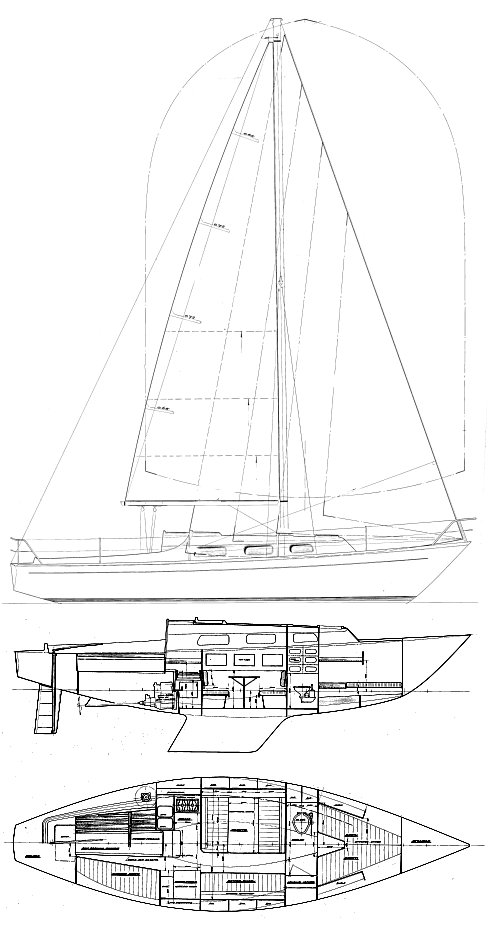
Legend 34 for sale elsewhere on the web:

Main features
| Model | Legend 34 | ||
| Length | 34 ft | ||
| Beam | 10.01 ft | ||
| Draft | 4.59 ft | ||
| Country | United Kingdom (Europe) | ||
| Estimated price | $ 0 | ?? |
Login or register to personnalize this screen.
You will be able to pin external links of your choice.

See how Sailboatlab works in video
| Sail area / displ. | 22.42 | ||
| Ballast / displ. | 38.64 % | ||
| Displ. / length | 237.53 | ||
| Comfort ratio | 23.22 | ||
| Capsize | 1.92 |
| Hull type | Monohull fin keel with rudder on skeg | ||
| Construction | Fiberglass | ||
| Waterline length | 25.79 ft | ||
| Maximum draft | 4.59 ft | ||
| Displacement | 9127 lbs | ||
| Ballast | 3527 lbs | ||
| Hull speed | 6.81 knots |

We help you build your own hydraulic steering system - Lecomble & Schmitt
| Rigging | Masthead Sloop | ||
| Sail area (100%) | 610 sq.ft | ||
| Air draft | 0 ft | ?? | |
| Sail area fore | 0 sq.ft | ?? | |
| Sail area main | 0 sq.ft | ?? | |
| I | 0 ft | ?? | |
| J | 0 ft | ?? | |
| P | 0 ft | ?? | |
| E | 0 ft | ?? |
| Nb engines | 1 | ||
| Total power | 0 HP | ||
| Fuel capacity | 9 gals |
Accommodations
| Water capacity | 60 gals | ||
| Headroom | 0 ft | ||
| Nb of cabins | 0 | ||
| Nb of berths | 0 | ||
| Nb heads | 0 |
Builder data
| Builder | Tyler Boat Co. Ltd. (UK) | ||
| Designer | E. G. van de Stadt | ||
| First built | 1969 | ||
| Last built | 0 | ?? | |
| Number built | 0 | ?? |
Modal Title
The content of your modal.
Personalize your sailboat data sheet
the teacher is correcting her essay

- Infographics
- Check Your Text
For large texts, please install the app first
To enable large texts, please confirm
To check your text, copy and paste or write directly into the online editor above.
To make sure your sentences are clear and your word choice is perfect, double-check your text.
Yes. This tool checks not only grammar, but also spelling, punctuation, word choice, and even style.
| 🔎 Checks | Grammar, spelling, punctuation, and more |
|---|---|
| ⚡ AI-based | Using the best grammar check algorithms |
| ✅ Free Check | No registration required |
| 🌐 English | US, UK, CA, AU, SA, NZ |
This tool is for anyone who writes in English, from students and learners to professionals, teachers, and even proofreaders. After all, even native speakers of English aren't immune to mistakes.
- Online Editor
- Privacy Policy
Popular Infographics
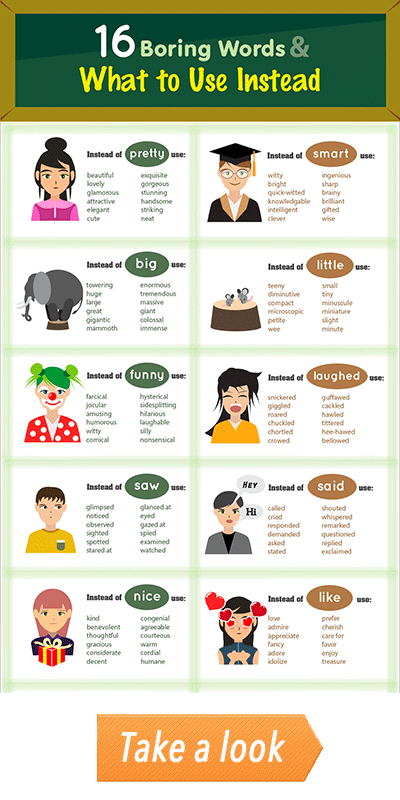
© 2024 GrammarCheck
We’ve updated the look and feel of ProWritingAid. Learn more about our new chapter.
- Grammar Checker
- Paraphrasing Tool
- Critique Report
- Writing Reports
- Learn Blog Grammar Guide Community Events FAQ
- Grammar Guide
Essay checker: free online paper corrector
Your best chance for an A+ essay. Try our free essay checker below.
Start typing, paste, or use
Get more suggestions to enhance this text and all your future writing
Your suggestions will show once you've entered some text.
Great job! We didn't find any suggestions in your text.
Why should you use a free essay checker?
The simple answer? Good grammar is necessary, but it's not easy. You've already done countless hours of research to write the essay. You don't want to spend countless hours correcting it too.
You'll get a better grade
Good grammar, or its absence, can determine if you get a good grade or a failing one. Impress your lecturer not just with how grammatically sound your writing is but how clear it is and how it flows.
You'll save time
Essay writing can be a long and tedious process. ProWritingAid's essay checker saves you the hassle by acting as the first line of defense against pesky grammar issues.
You'll become a better writer
Essay writing is a particular skill and one that becomes better with practice. Every time you run your essay through ProWritingAid's essay corrector, you get to see what your common mistakes are and how to fix them.
Good Writing = Good Grades
It's already hard to know what to write in an essay. Don't let grammar mistakes hinder your writing and prevent you from getting a good grade. ProWritingAid's essay checker will help you write your best essay yet. Since the checker is powered by AI, using it means that grammar errors don't stand a chance. Give your professors something to look forward to reading with clear, concise, and professional writing.

How does ProWritingAid's essay checker work?
Your goal in essay writing is to convey your message as best as possible. ProWritingAid's essay checker is the first step toward doing this.
Get rid of spelling errors
ProWritingAid's essay checker will show you what it thinks are spelling errors and present you with possible corrections. If a word is flagged and it's actually spelled correctly, you can always choose to ignore the suggestion.
Fix grammar errors
Professors aren't fans of poor grammar because it interrupts your message and makes your essay hard to understand. ProWritingAid will run a grammar check on your paper to ensure that your message is precise and is being communicated the way you intended.
Get rid of punctuation mistakes
A missing period or comma here and there may not seem that serious, but you'll lose marks for punctuation errors. Run ProWritingAid's essay checker to use the correct punctuation marks every time and elevate your writing.
Improve readability
Make sure that in the grand scheme, your language is not too complicated. The essay checker's built-in Readability report will show if your essay is easy or hard to read. It specifically zones in on paragraphs that might be difficult to read so you can review them.
What else can the essay checker do?
The editing tool analyzes your text and highlights a variety of key writing issues, such as overused words, incohesive sentence structures, punctuation issues, repeated phrases, and inconsistencies.
You don't need to drown your essay in words just to meet the word count. ProWritingAid's essay checker will help to make your words more effective. You'll get to construct your arguments and make sure that every word you use builds toward a meaningful conclusion.
Transition words help organize your ideas by showing the relationship between them. The essay checker has a built-in Transition report that highlights and shows the percentage of transitions used in your essay. Use the results to add transitions where necessary.
An engaging essay has sentences of varying lengths. Don't bore your professor with long, rambling sentences. The essay checker will show you where you need to break long sentences into shorter sentences or add more sentence length variation.
Generally, in scholarly writing, with its emphasis on precision and clarity, the active voice is preferred. However, the passive voice is acceptable in some instances. When you run your essay through ProWritingAid's essay checker, you get feedback on whether you're using the passive or active voice to convey your idea.
There are specific academic power verbs, like appraise , investigate , debunk , support , etc., that can add more impact to your argument by giving a more positive and confident tone. The essay checker will check your writing for power verbs and notify you if you have less than three throughout your essay.
It's easy to get attached to certain phrases and use them as crutches in your essays, but this gives the impression of boring and repetitive writing. The essay checker will highlight your repeats and suggest contextually relevant alternatives.
Gain access to in-house blog reports on citations, how to write a thesis statement, how to write a conclusion, and more. Venture into a world of resources specific to your academic needs.
What kinds of papers does ProWritingAid correct?
No matter what you're writing, ProWritingAid will adapt and show you where your edits are needed most.
- Argumentative
- Descriptive
- Textual analysis
- Lab reports
- Case studies
- Literature reviews
- Presentations
- Dissertations
- Research papers
Professors and students love using ProWritingAid
If you're an English teacher, you need to take a look at this tool - it reinforces what you're teaching, highlights strengths and weaknesses, and makes it easier to personalize instruction.

Jennifer Gonzales
Only reason I managed to get an A in all my freshman composition classes.

Chris Layton
Great tool for academic work. Easy to use, and the reports and summary evaluation of your documents in several categories is very useful. So much more than spelling and grammar!

Debra Callender
Questions & Answers
1. how do i use the essay checker online tool.
You can either copy and paste your essay in the essay checker field or upload your essay from your computer. Your suggestions will show once you enter text. You'll see a number of possible grammar and spelling issues. Sign up for free to get unlimited suggestions to improve your writing style, grammar, and sentence structure. Avoid unintentional plagiarism with a premium account.
2. Does the essay checker work with British English and American English?
The essay checker works with both British English and American English. Just choose the one you would like to use and your corrections will reflect this.
3. Is using an essay checker cheating?
No. The essay checker won't ever write the essay for you. It will point out possible edits and advise you on changes you need to make. You have full autonomy and get to decide which changes to accept.
4. Will the essay checker autocorrect my work?
The essay writing power remains in your hands. You choose which suggestions you want to accept, and you can ignore those that you don't think apply.
5. Is there a student discount?
Students who have an eligible student email address can get 20% off ProWritingAid Premium. You can apply for a student discount through Student App Centre .
6. Does ProWritingAid have a plagiarism checker?
Yes. ProWritingAid's plagiarism checker will check your work against over a billion webpages, published works, and academic papers, so you can be sure of its originality. Find out more about pricing for plagiarism checks here .
A good grade is closer than you think
Drop us a line or let's stay in touch via :
Sentence Checker
Free online spell and grammar checker based on LanguageTool an open source proofreading software. To check the text please type or paste it into the field below and click Check text.
- 0 spelling errors
- 0 grammar errors
- 0 style issues
Check text to get stats
No mistakes were found
Check your text for errors, choose the best possible corrections from the suggested ones, and learn with the help of our service. The algorithm will detect syntactic, grammatical, and stylistic errors, suggest replacement options, and explain its decision in detail. On SentenceChecker.com you can check the text of any complexity, because our databases contain a large number of rules. We have made sure that working with the text is convenient and fast for you. Here’s how to use our tool...
Paste or Enter Text
There is a field for your text on the website. You can enter your own text into it or paste it by copying it from another location. You can use keyboard shortcuts to undo and revert changes:
- Windows, Linux: Ctrl+Z (undo), Ctrl+Shift+Z, and Ctrl+Y (redo);
- macOS: Cmd+Z (undo), Cmd+Shift+Z (redo).
- iOS, iPadOS: tap with three fingers on the input field, left arrow (undo), right arrow (redo);
- Android: native implementation, depends on the manufacturer.
Select the Language to Check the Text
Our site offers a large number of languages, as well as different dialects, if any. Choose the appropriate language for your text. The language selection field is located to the left above the input field. We also recommend that you take into dialect, because the rules between them often differ.
Languages supported by our service: Arabic, Asturian, Belarusian, Breton, Catalan, Catalan (Valencian), Chinese, Danish, Dutch, English (Australian), English (British), English (Canadian), English (New Zealand), English (South African), English (US), Esperanto, French, Galician, German (Austria), German (Germany), German (Switzerland), Greek, Irish, Italian, Japanese, Khmer, Persian, Polish, Portuguese (Angola), Portuguese(Brazil), Portuguese (Mozambique), Portuguese (Portugal), Romanian, Russian, Slovak, Slovenian, Spanish, Swedish, Tagalog, Tamil, Ukrainian.
Run the Text Validation Algorithm
Click on the «Check text» button on the right under the input field, this action will start the algorithm. The text will be sent to our server, where the algorithm will check it for errors and return the result. We do not store your text on our servers. During the verification process, the input field becomes unavailable. After the server returns the result, the service will select the sections of text where the algorithm detected some issue. Now you can proceed to correction.
Correct Errors in the Text
Information about the errors is displayed to the right above the input field. You can click on any of the items and start correcting errors of this category, or click on the highlighted areas in the text and follow them.
When you see the text «No mistakes were found» instead of the number of errors, it means that the text is checked and contains no errors. If «Check text to get stats» is displayed instead, then you need to perform an additional check by clicking on the «Check text» button.
In some cases, the algorithm does not provide options for replacing errors, but offers to ignore them. This is due to the type of error or unfamiliar situations. Usually, this does not happen. If you think that everything is correct, then you can ignore the error.
Ignoring the Error
Ignoring the error means excluding this rule from the list for text checkup. This error will not be detected throughout the text and it will not be brought to your attention later in the course of work. This feature is necessary when you want to leave the writing as it is and do not want to be distracted by it in the future.
AI Proofreader
Improve your entire paper within 5 minutes.
- Corrections directly in your .docx document
- Upload unlimited documents for 30 days
- Advanced corrections & free citation check included
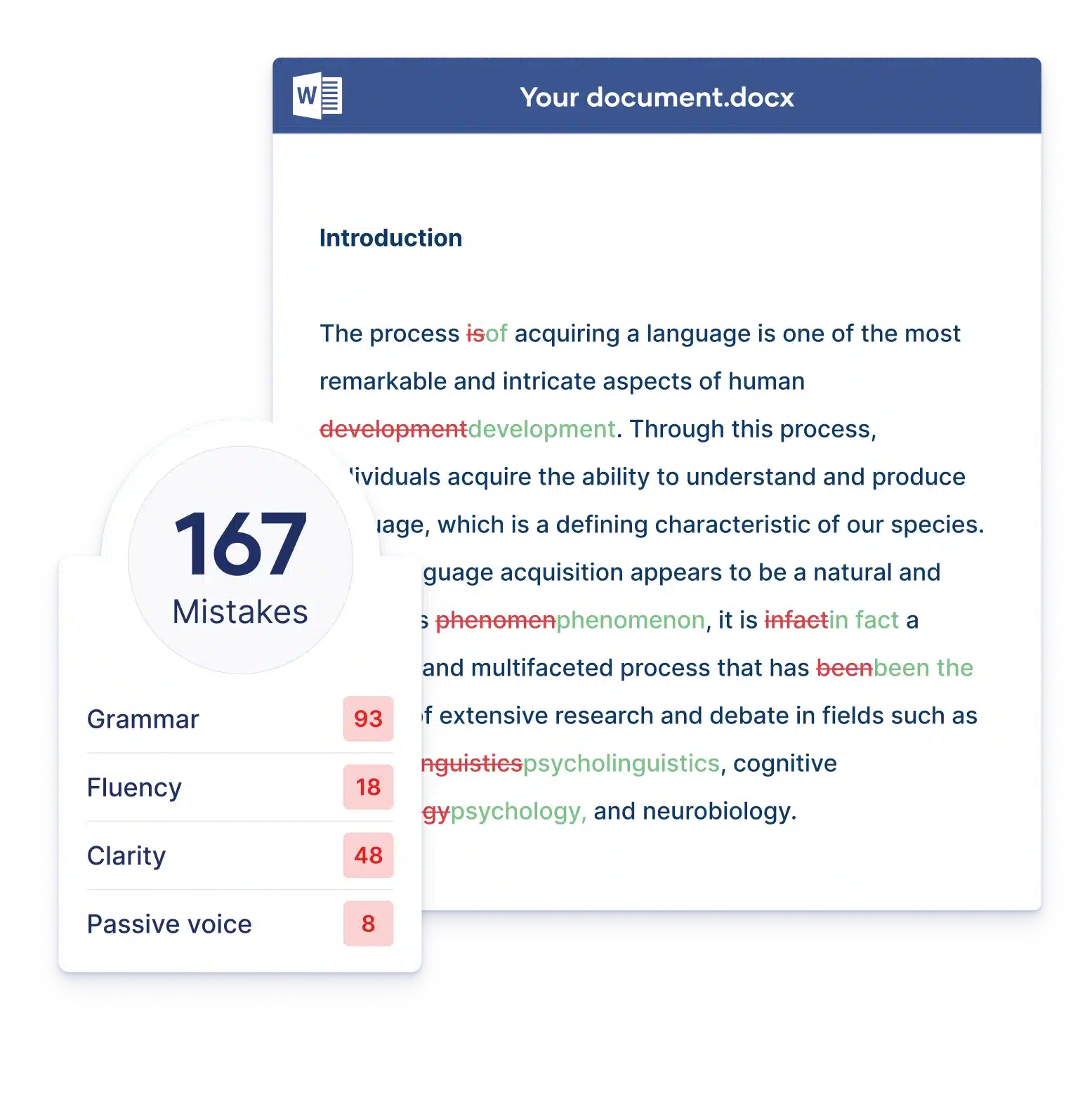
Powerful features
Made for academic writing.
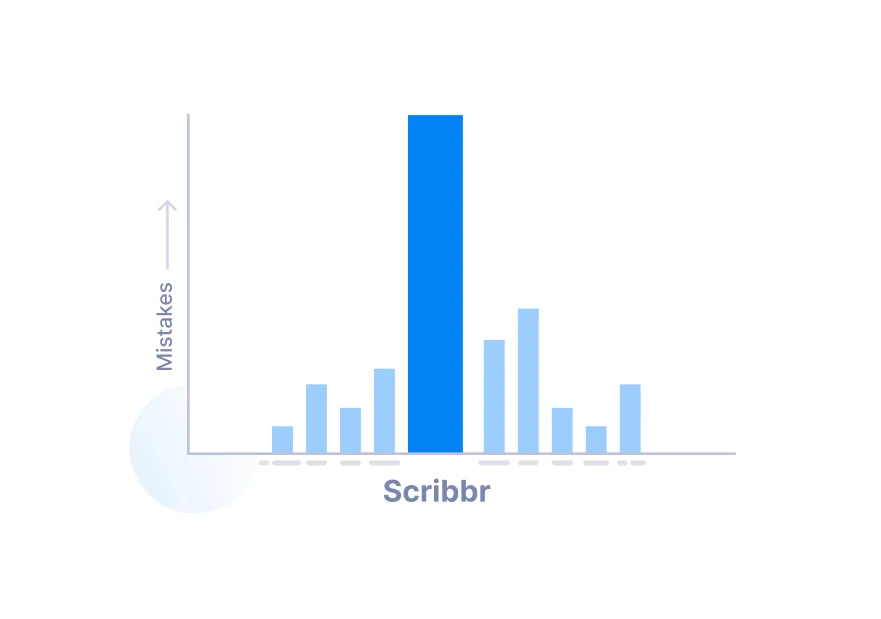
High accuracy
Trained on 1000s of academic documents, the AI Proofreader accurately catches academic writing mistakes.
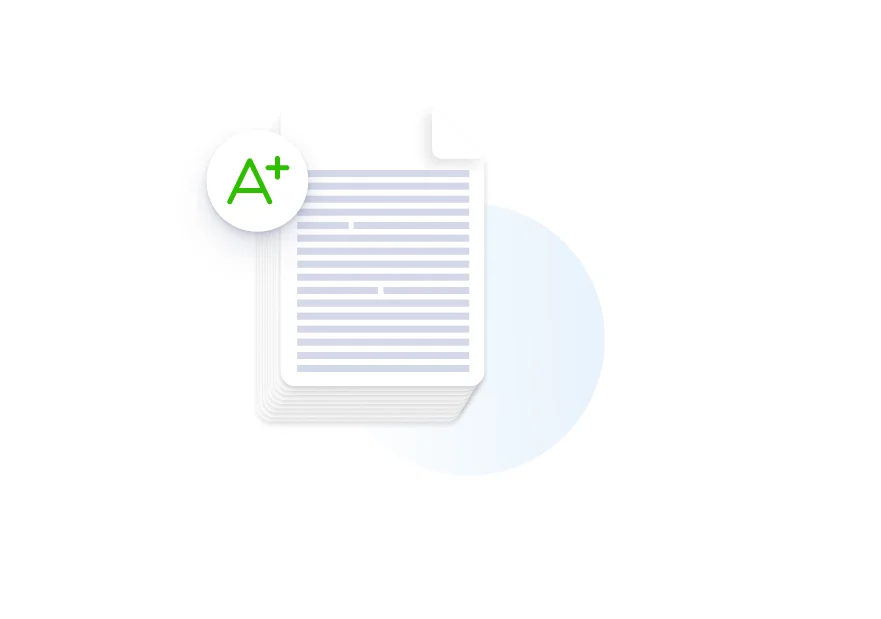
Improve your grades
The AI proofreader makes your academic writing clear and easy to read, without any errors. This improves your writing and your grades.
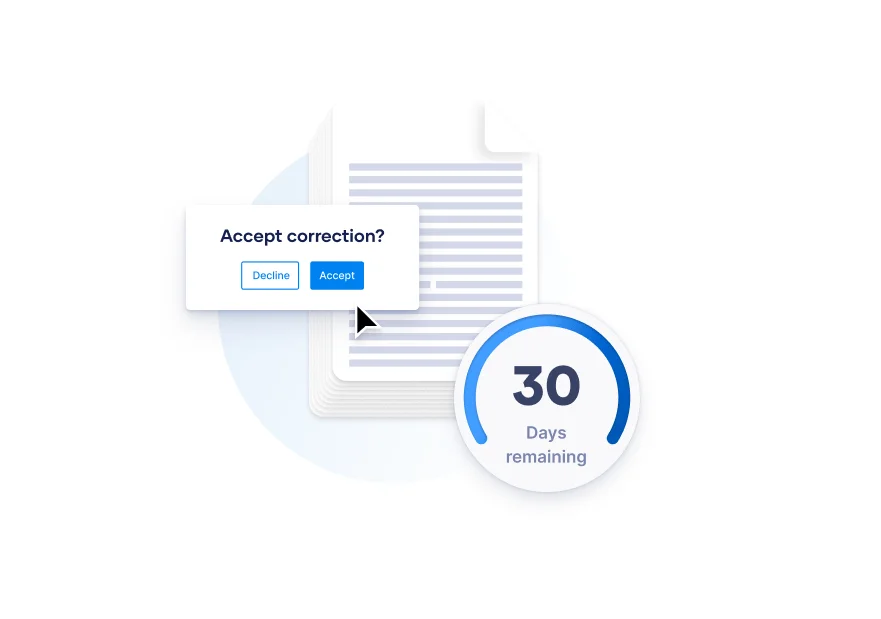
1-click corrections
Accept or reject any correction directly within your document. Upload as much drafts, chapters and assignments as you want for 30 days.
This is how we improve your document
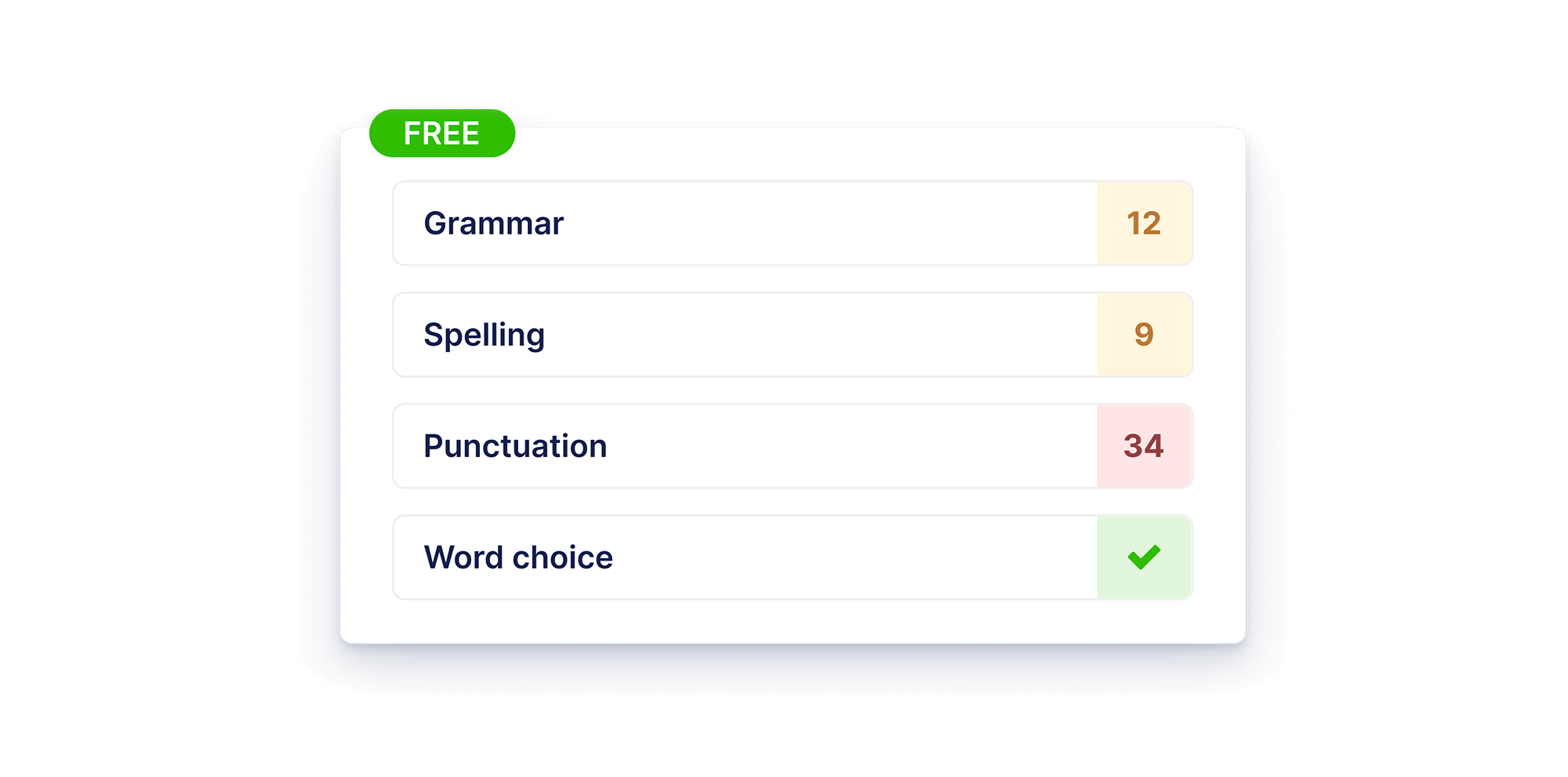
1. Upload & get free error assessment
The AI Proofreader scans for 100s of academic language errors. Within 5 minutes, a report will reveal your mistakes.
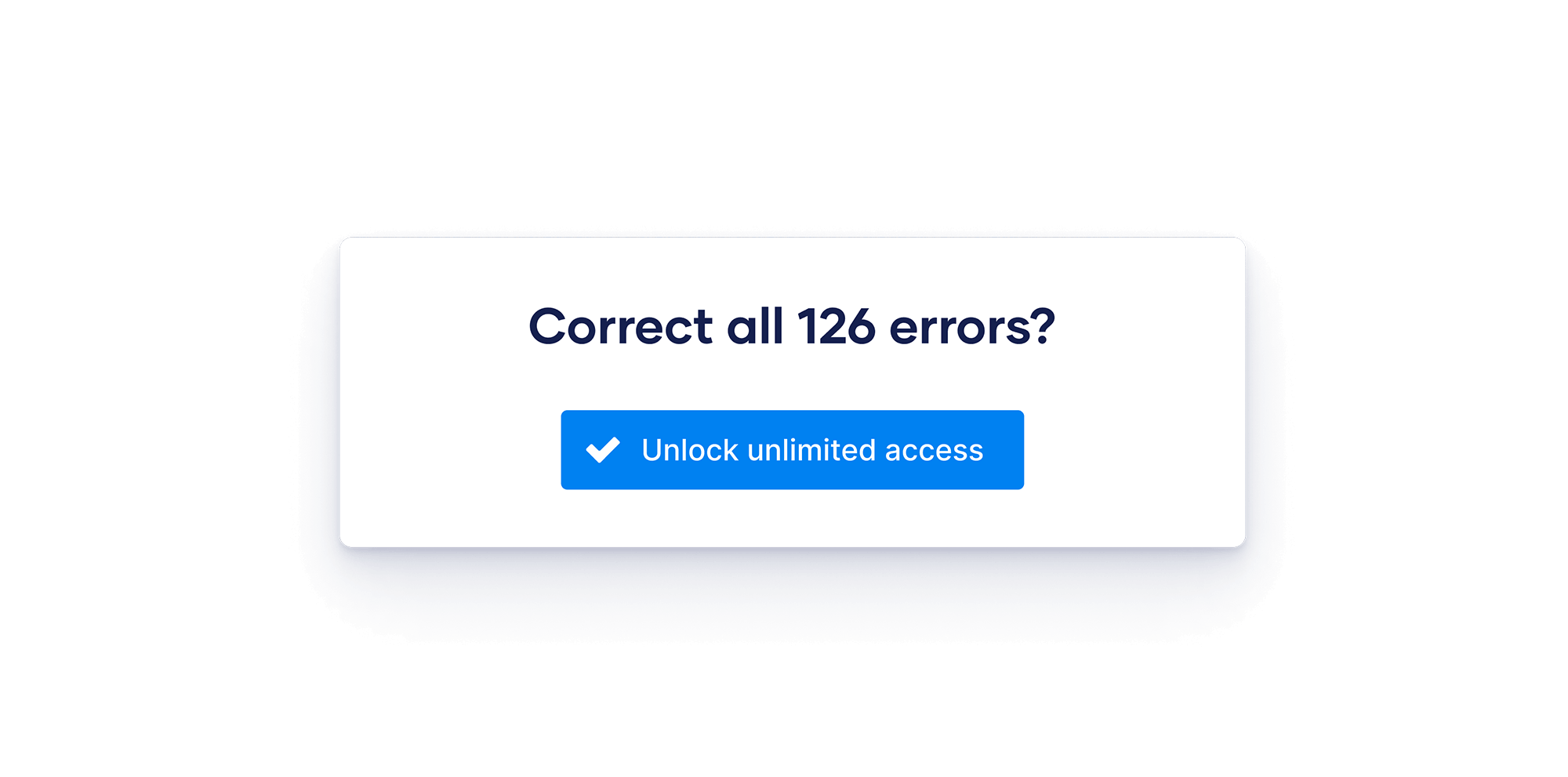
2. Review all corrections in detail by unlocking unlimited access
Unlock unlimited access to download your .docx with all the corrections. You can now submit unlimited documents for 30 days!
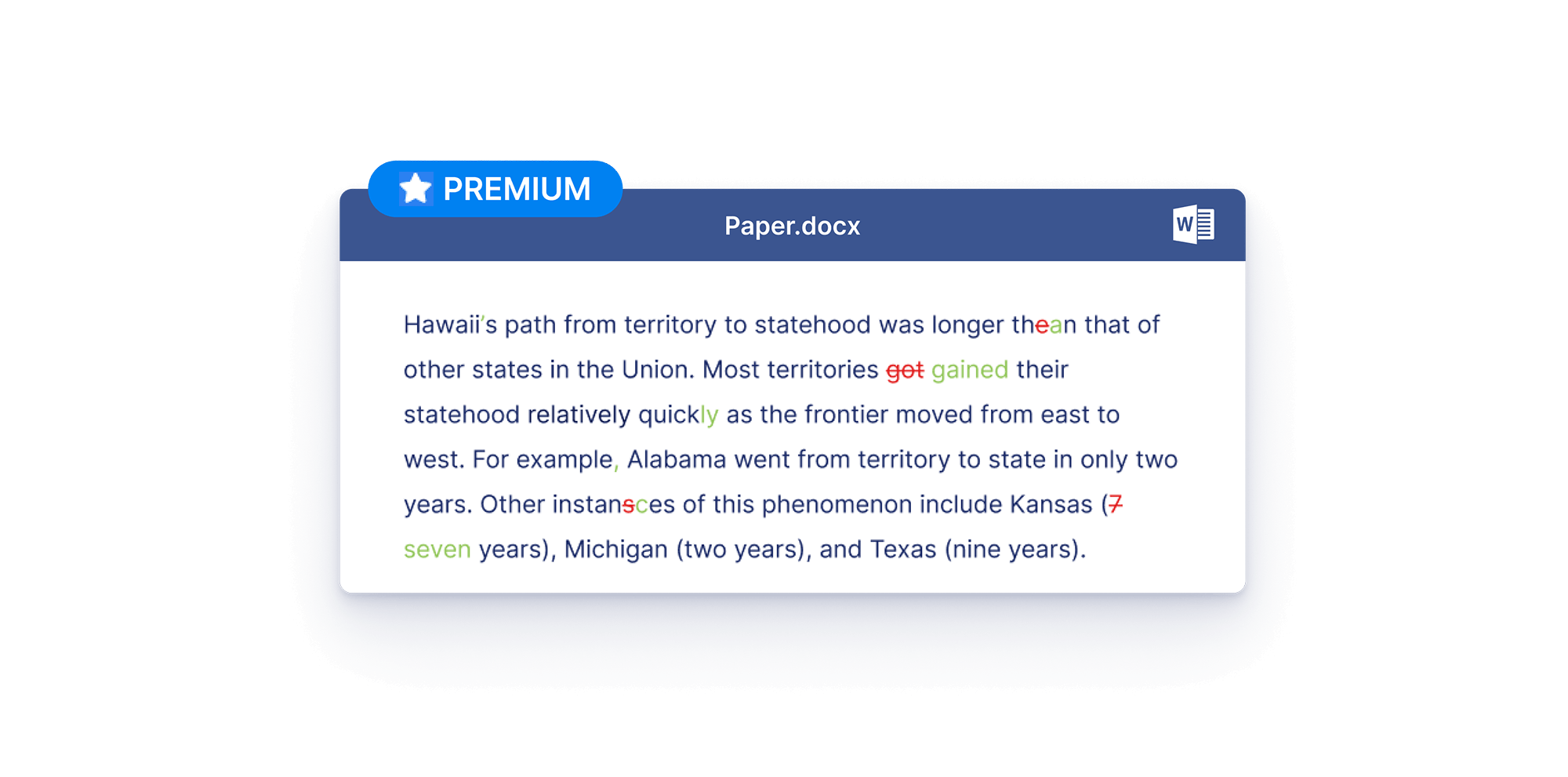
3. Download and review changes in your .docx
Download the .docx document to accept or reject the corrections inside your document. You can also accept all changes with one click.
High accuracy guaranteed
We created the AI Proofreader to correct academic texts. To achieve this, we trained it on 1000s of academic papers. That’s why it covers more advanced mistakes in academic writing. It also makes sure that your writing is clear and easy to understand.
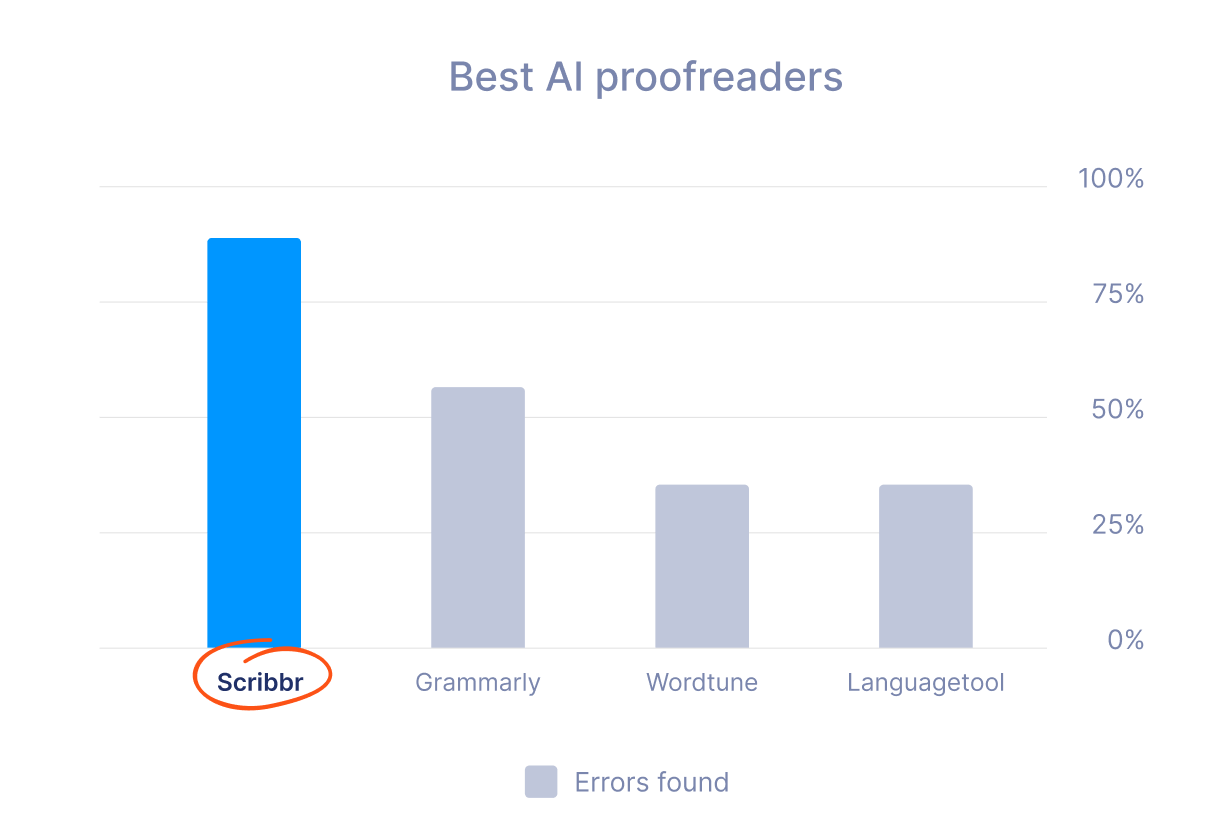
Privacy guarantee
Submissions don’t get added to our database. Your document gets deleted after it’s corrected.
12 years of experience
Scribbr has improved thousands of academic documents and published hundreds of helpful articles on writing.

100% satisfaction guarantee
If you’re not completely happy, let us know! Together, we’re guaranteed to find a solution that leaves you 100% satisfied.
Did you know that we’ve helped over 5,000,000 students graduate since 2012?
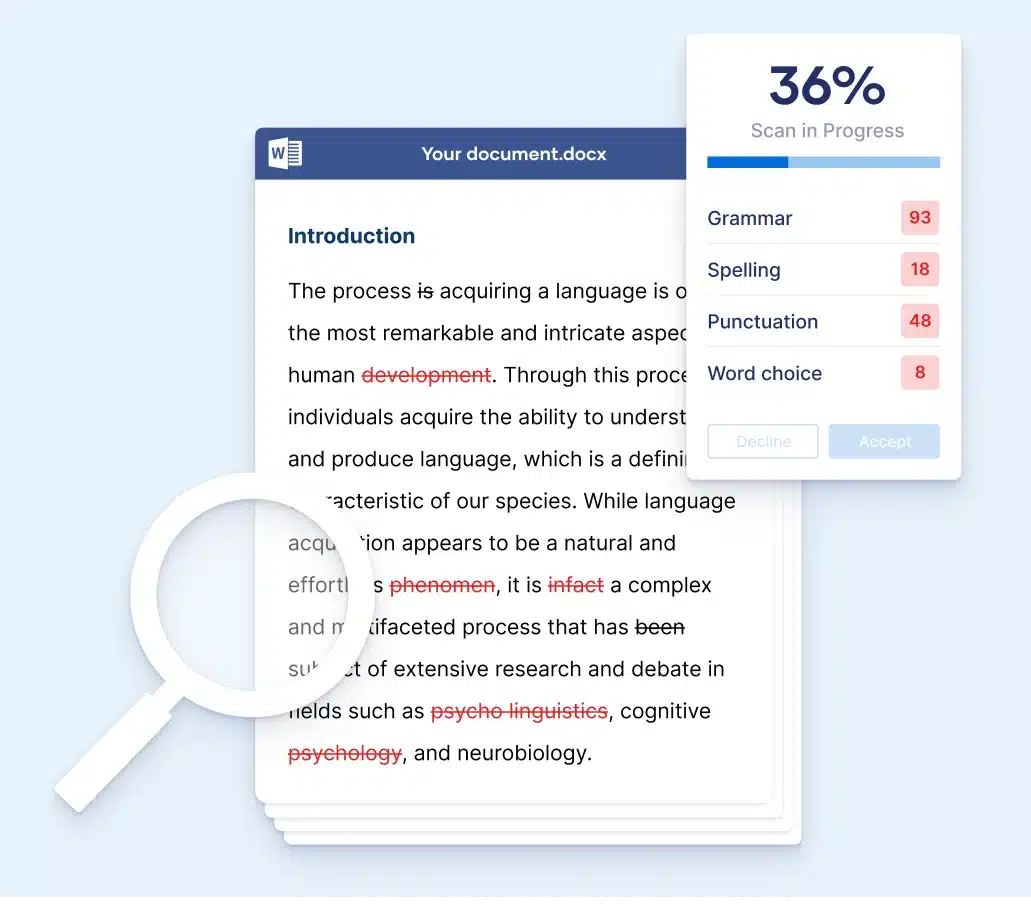
Always start with a free language scan
After uploading your document you get an overview of all writing issues. The scanner looks for grammar, spelling, punctuation, word choice & fluency errors in your document.
Scan my document for errors
I thought AI Proofreading was useless but..
“I’ve been using Scribbr for years now and I know it’s a service that won’t dissapoint. I want to seem professional and straight to the point when I submit my work. I’m happy with the correction. It does a good job spotting grammar mistakes”
Going beyond correcting your grammar
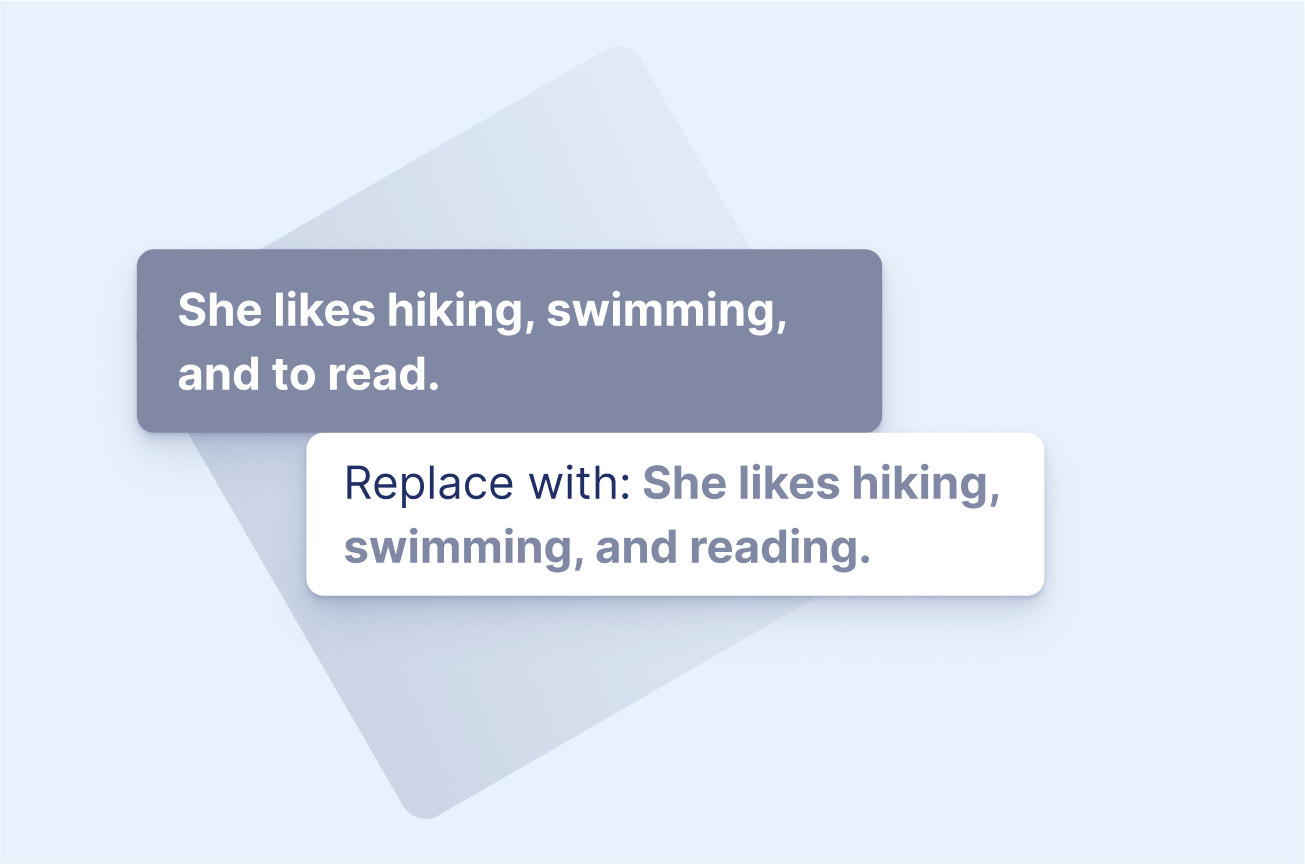
The Scribbr AI proofreader fixes grammatical errors like:
- Sentence fragments & run-on sentences
- Subject-verb agreement errors
- Issues with parallelism
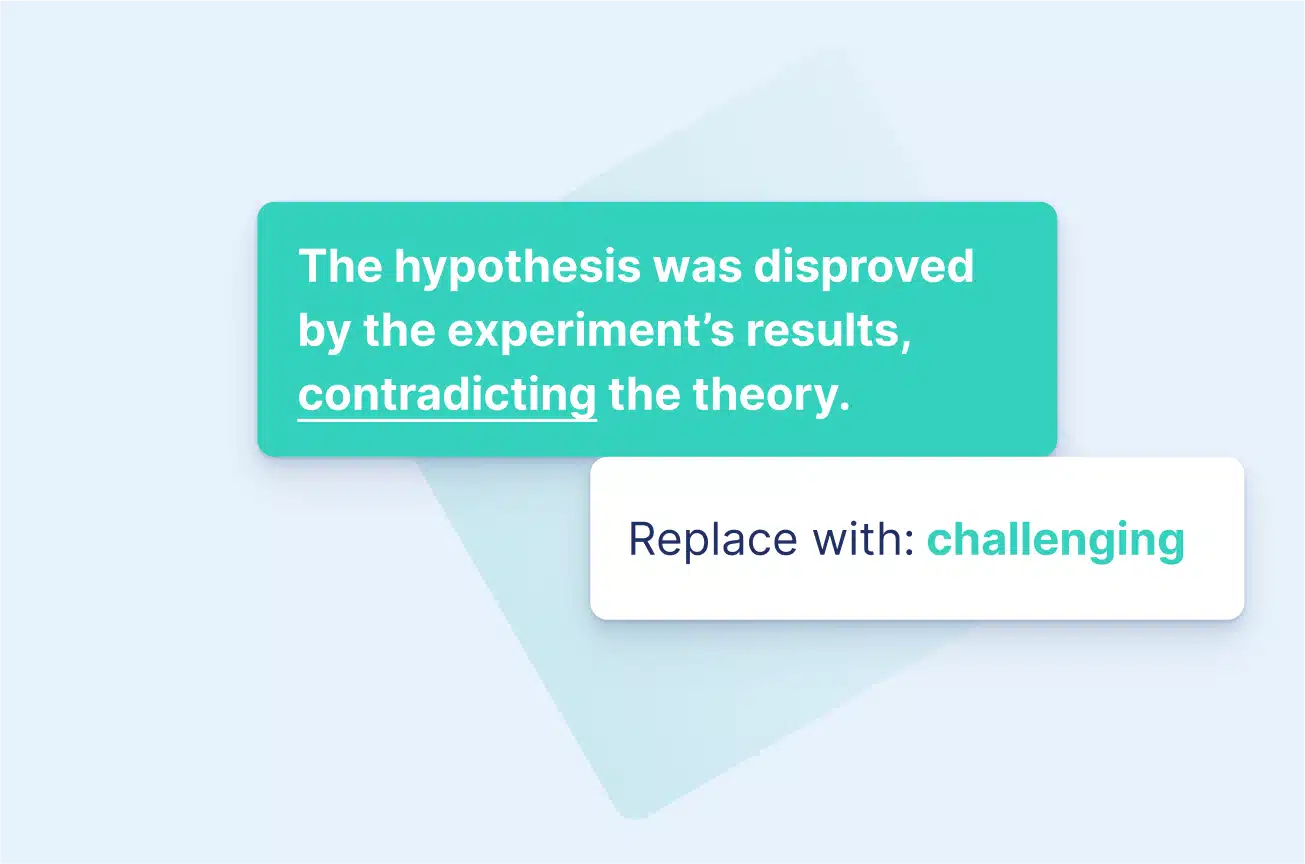
Basic spell-checks often miss academic terms in writing and mark them as errors. Scribbr has a large dictionary of recognized (academic) words, so you can feel confident every word is 100% correct.
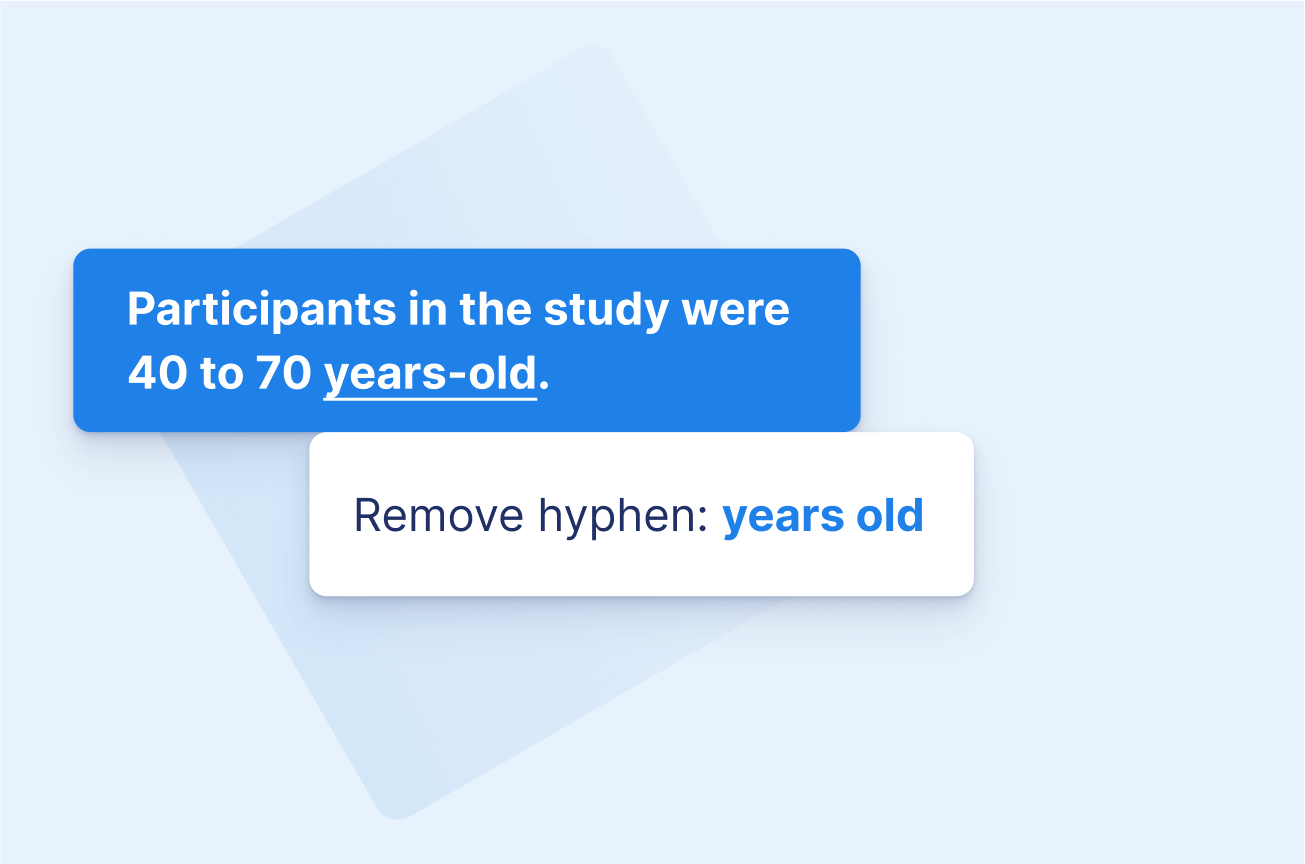
Punctuation
The AI Proofreader takes away all your punctuation worries. Avoid common mistakes with:
- Apostrophes
- Parentheses
- Question marks
- Colons and semicolons
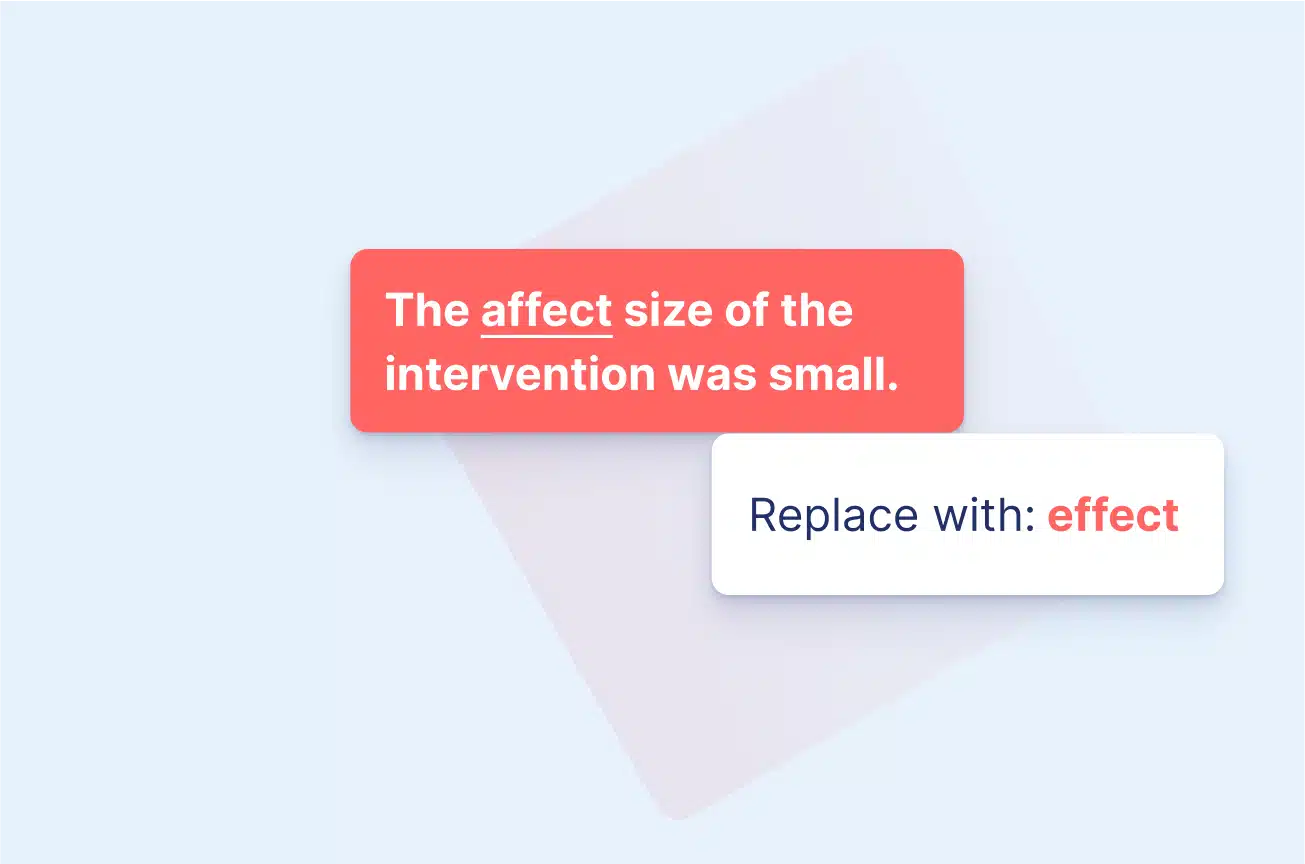
Wrong word choice
Fix problems with commonly confused words, like affect vs. effect, which vs. that and who vs. that.
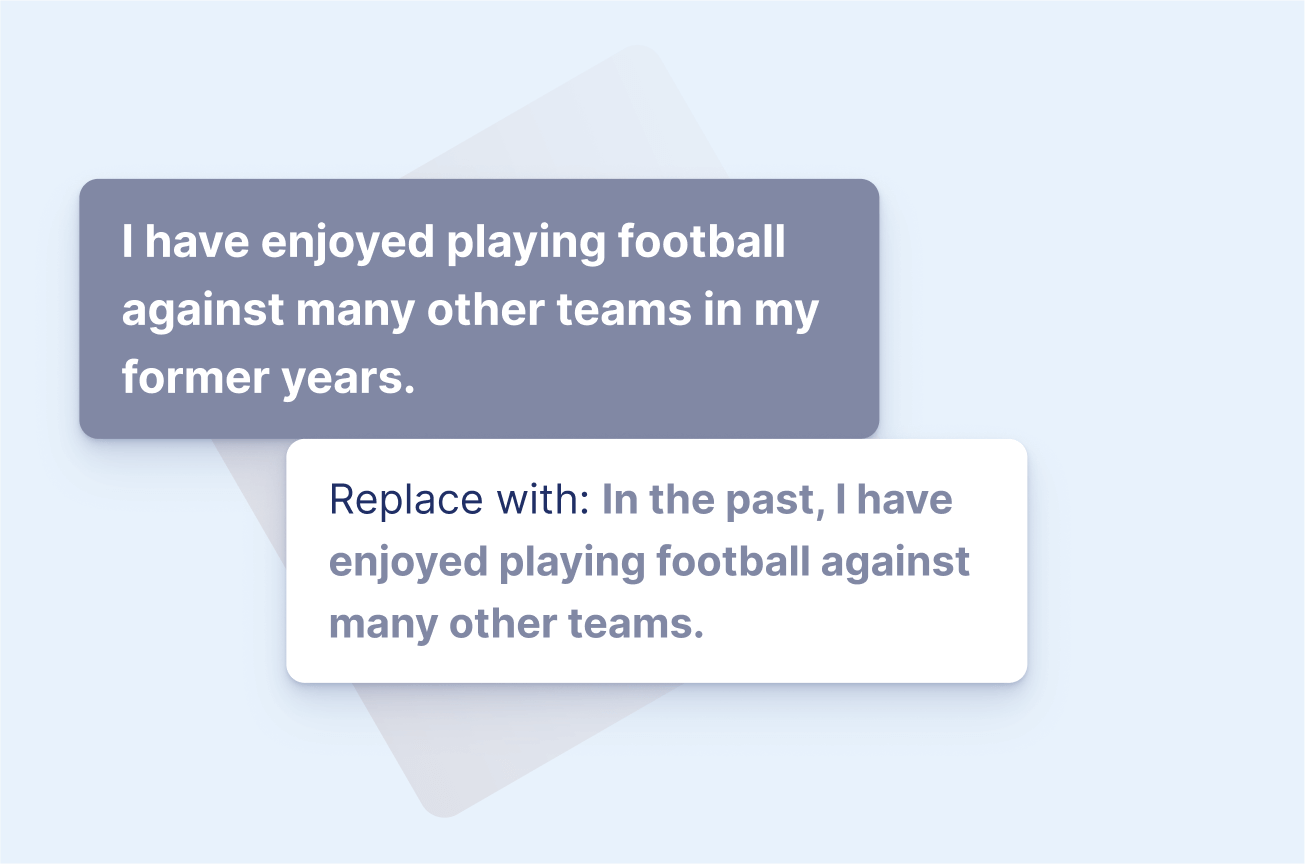
The proofreader suggests fluency corrections to make your writing easier to read.
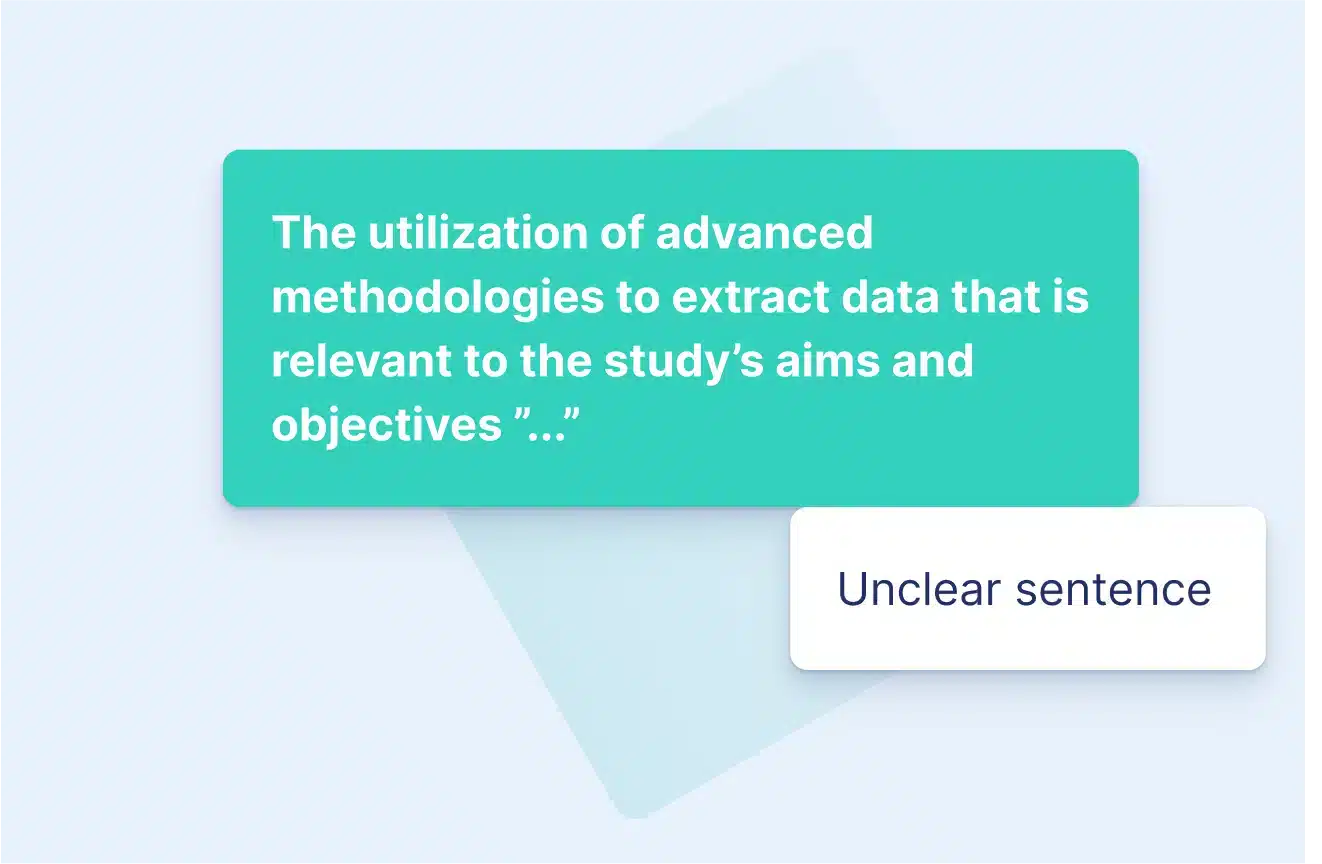
Unclear sentences
Long, complex sentences can make your writing hard to read. The AI Proofreader makes sure you express your ideas clearly.
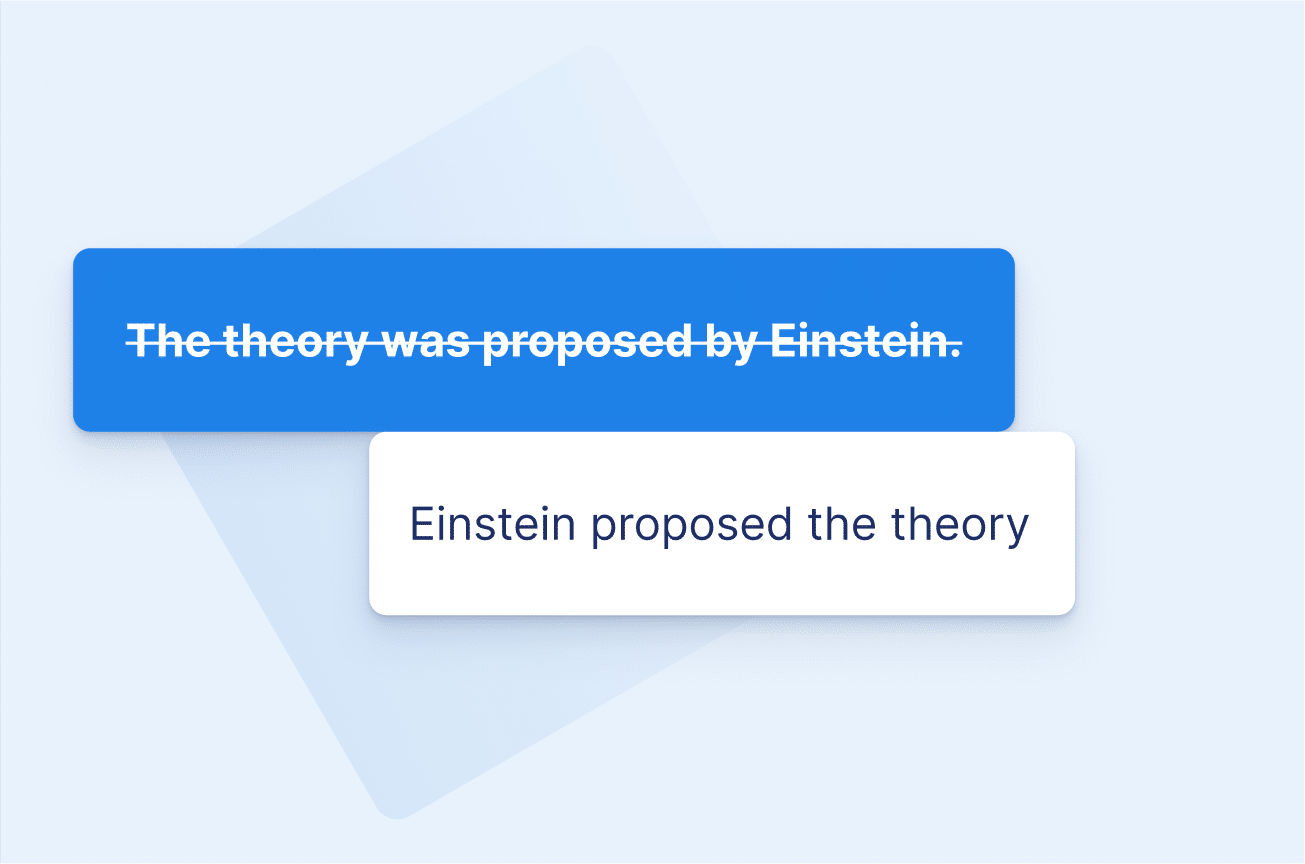
Passive voice
Active voice makes your sentences clear and concise. The AI proofreader reduces the overuse of passive voice in your text.
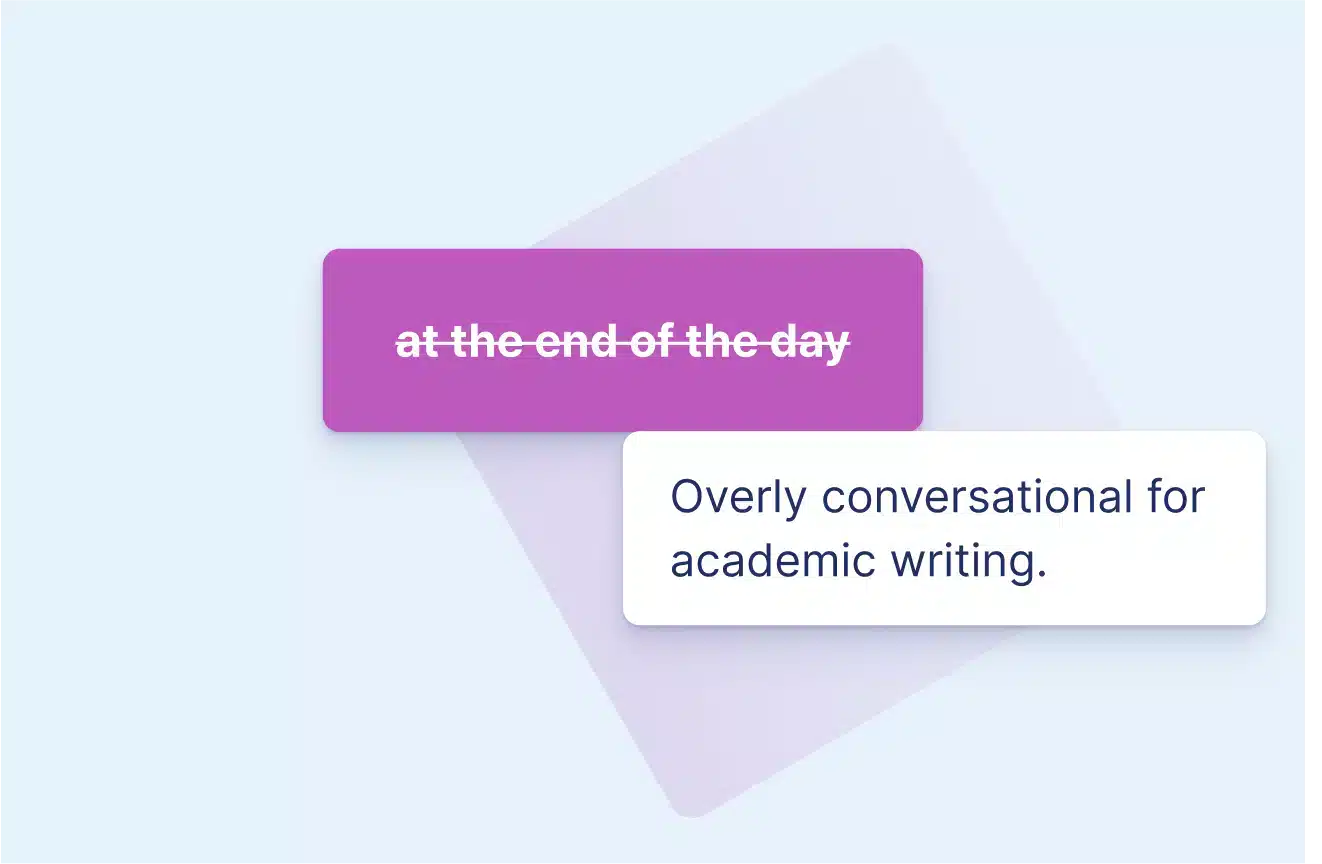
Overused expressions
Clichés can make your writing seem lazy and predictable. Eliminating them will make your text more engaging and compelling.
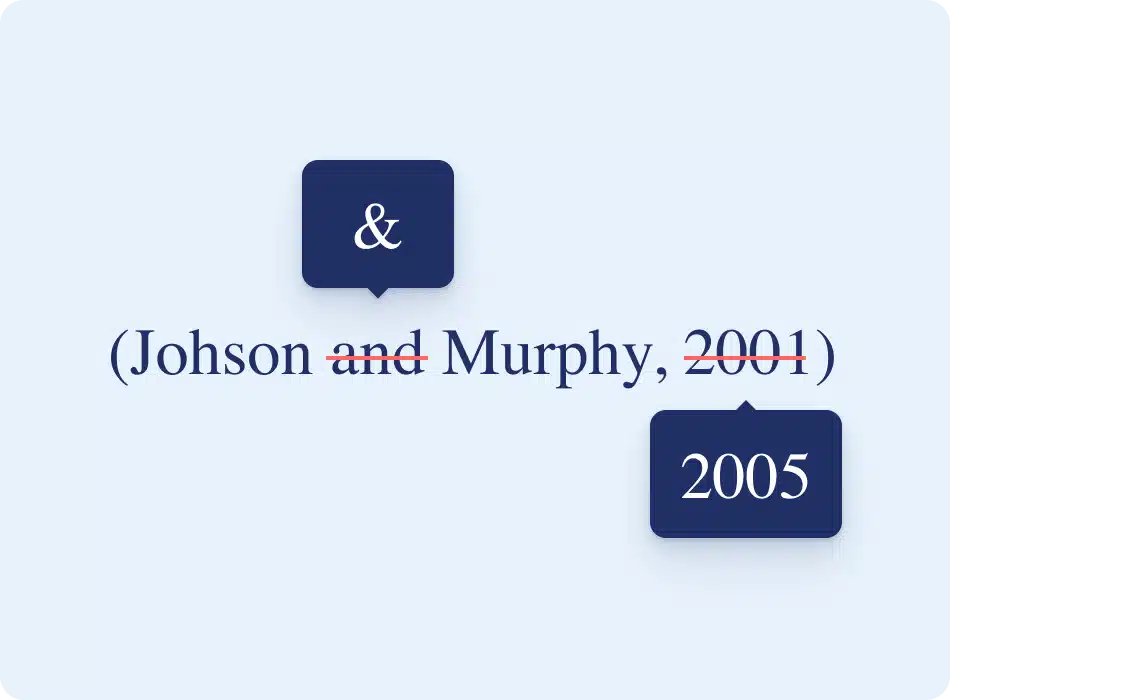
Value: $9.95
Free bonus feature: citation checker.
Get your citations checked on all APA guidelines. You’ll receive an interactive report highlighting all errors and an outline of their solutions. Normally $9.95, now included with the AI Proofreader for free.
Find out if your writing is submit-ready
Ask our team.
Want to contact us directly? No problem. We are always here for you.
- Email [email protected]
- Start live chat
- Call +1 (510) 822-8066
- WhatsApp +31 20 261 6040

Frequently asked questions
Our AI Proofreader has been trained on academic texts. It also addresses commonly confused words, and it’s more accurate than Word’s autocorrect feature. Word’s autocorrect feature usually operates on a word level, whereas our AI Proofreader can proofread on the sentence and, to an extent, even the paragraph level. Because it’s more accurate and fixes more than just grammar mistakes, our AI Proofreader identifies and corrects more mistakes overall. Furthermore, because you check your document with our AI Proofreader after you’ve finished writing it, your workflow won’t be interrupted.
Rest assured: Your documents are safe. The document you upload is deleted immediately after it’s been processed by our AI Proofreader, and your processed document will automatically be deleted from our servers after 12 months. If you’d like to delete the stored copy of your document sooner, you can do so manually through your user profile at any time. For more information, please consult our articles on how we ensure the security of your documents.
For now, the AI Proofreader only corrects based on the conventions of US English. We will add other dialects at a later stage.
You can only upload .docx (Word) files to the AI Proofreader.
Absolutely! The AI Proofreader is particularly useful for non-native English speakers, as it can detect mistakes that may have gone unnoticed.
There’s no need for any downloads! You can use our AI Proofreader right in your web browser. Just upload your document and sit back; you’ll receive a revised version of your document within 10 minutes.
No; the AI Proofreader currently focuses on grammar, spelling, and punctuation errors. If you’re interested in detecting any potential plagiarism in a document, we recommend that you consider our Plagiarism Checker . The AI Proofreader is included for free in that service.
Absolutely! Every change suggested by the AI Proofreader is indicated as a tracked change in Word. You can decide which changes to accept or reject in your document, and, if you’re feeling confident, you can even accept all of the changes with just one click.
The cost is $9.95 per document, no matter the length. You won’t pay more based on the number of words or characters. Our AI Proofreader is ideal for academic papers and dissertations!
The exact time depends on the length of your document, but, in most cases, the proofreading will be completed within a maximum of 10 minutes.
No.To make sure that your reference list isn’t disrupted, we’ve implemented suppression rules in our model.
No. You can, however, get a free report that tells you exactly how many and what kinds of mistakes there are in your document.

Essay Writing: Correcting Common Mistakes

Avoiding Errors Helps Readers Understand One’s Paper

Sentence Fragments
Relying solely on spell checkers, awkward phrases, grammatical misspellings.
Wipe out plagiarism & grammar errors
Get automatic paper help
- Expert Check
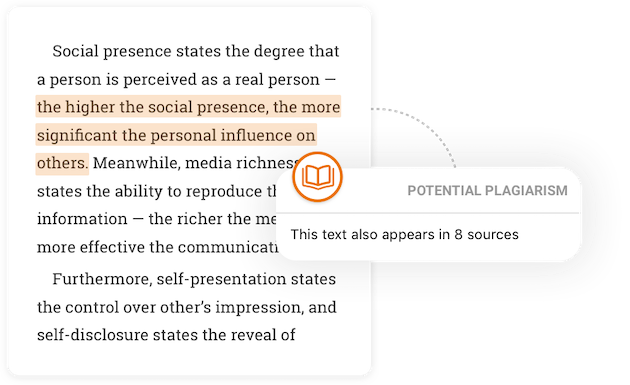
Check for unintentional plagiarism
Check your paper for unintentional plagiarism against thousands of sources.
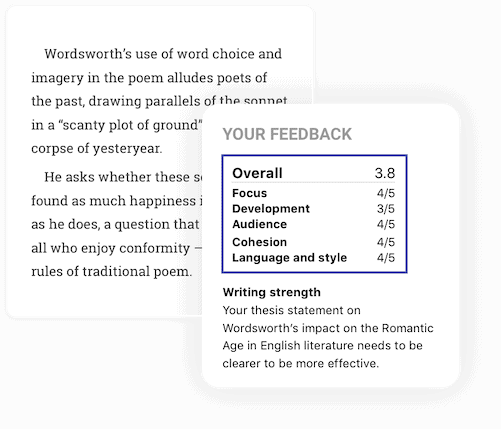
Strengthen your writing
Give your paper an in-depth check. Receive feedback within 24 hours from writing experts on your paper's main idea, structure, conclusion, and more.
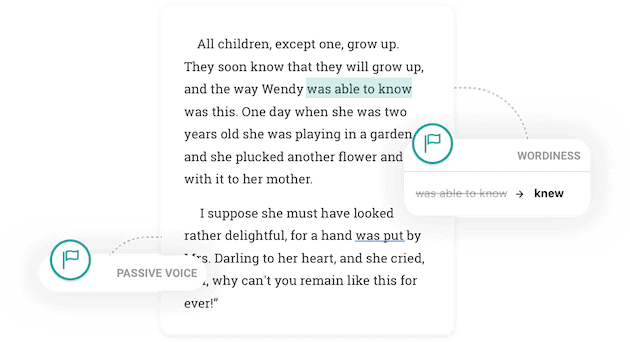
Find and fix grammar errors
Don't lose points over small mistakes. Our smart proofreader checks for grammar and writing mistakes so that you don't have to.
What students are saying about us

"Caught comma errors that I actually struggle with even after proofreading myself."
- Natasha J.

"I find the suggestions to be extremely helpful especially as they can instantly take you to that section in your paper for you to fix any and all issues related to the grammar or spelling error(s)."
- Catherine R.
Write with confidence with...
| Features | Free Account | EasyBib Plus |
|---|---|---|
| Unlimited suggestions to improve your writing style, grammar and sentence structure | Unlimited | Unlimited |
| Unlimited checks for unintentional plagiarism | None | Unlimited |
| Multiple styles and source type to choose from to create accurate citations | None | Unlimited |
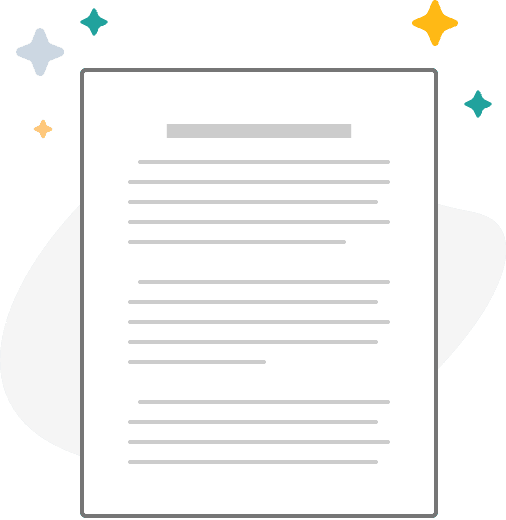
Personalized Writing Help When You Need it
Unintentional plagiarism, grammar mistakes, and uncited sources can turn what you thought was a good paper into a poor one. When you’re writing a paper the last thing you want is for your message to get lost due to incorrect punctuation or confusing sentence structure. You know that the great ideas in your head would make for a standout paper, if only you could get them written clearly on the page. If this struggle sounds familiar, you’re not alone.
Great ideas may be an essential part of high-quality writing, but they’re not the only component. Excellent papers and essays clearly express strong ideas with good grammar, proper punctuation, spot-on spelling, and thorough, careful citations. While this may sound like a lot, your teachers and professors are grading you on your skills as both a writer and a researcher, which means your assignments will require an ethical and attentive approach. Luckily, there is no shortage of available tools to help you along your way.
You could use a plagiarism checker free, though, these tools often lack grammatical support. Given the high stakes and rigorous requirements, the aid of a plagiarism checker without the needed support of a grammar checker could mean the difference between an “A” paper and a “C” or even “D” paper.
Thankfully, the EasyBib Plus plagiarism tool provides all-in-one support to cover all your bases. Our premium essay checker is convenient, easy to use, and includes access to a grammar and spell checker, plus a plagiarism checker. With a single scan, you’ll receive personalized feedback to help identify potentially missing citations and help improve your sentence structure, punctuation, grammar, and more.
Not sure if that noun is spelled correctly, or if the preposition at the end of your sentence is grammatically correct? The EasyBib Plus plagiarism tool is your one-stop shop to help check plagiarism, get grammatical suggestions, correct spelling and punctuation errors, and help create polished papers you can be proud to turn in. And, we haven’t told you the best part yet: you can try our tool free and scan your work for grammar suggestions right now!
Access all the tools today!
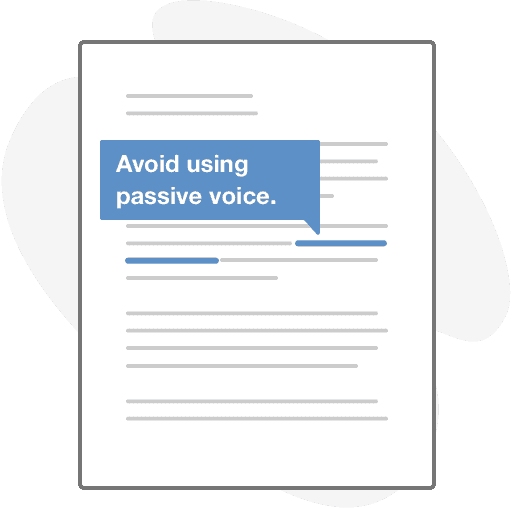
A Grammar Check for Peace of Mind
You know that grammar plays a significant role in your assignments. Not only does it factor into your overall grade, but without clear and precise language, your ideas can lose their impact or might even be misunderstood entirely. Still, with so many different parts of speech and rules to learn and apply, it’s not uncommon to get them mixed up and find yourself questioning your knowledge now and again:
Can you use an adverb to modify a noun? (No. You need an adjective for that.)
Well, can you use it to modify a pronoun ? (Still no.)
What do they modify, then? (Almost everything else. Fun, right?)
Ugh. (That was an interjection .)
Does this have to be so difficult? (Nope!)
Scanning your paper with the EasyBib Plus writing tool delivers more than the basic punctuation and spell check functions that come standard in word processing programs. You’ll receive immediate, targeted feedback that can help improve the sentence structure and style of your writing. Not only can this help ensure that you don’t lose points off your grade for grammatical errors such as mismatched verb tense, but it can also help to clarify your meaning and strengthen your arguments by eliminating confusing punctuation and run-on sentences that confuse readers.
Reviewing your work to correct errors and refine the flow of your writing is a critical part of the revision process for novices and novelists alike. Even the most conscientious of wordsmiths might make mistakes, such as using a conjunctive adverb in place of a coordinating conjunction or pairing a plural determiner with an uncountable word. They likely appreciate a subscription-based or free grammar check as much as a beginning writer. That’s why the EasyBib Plus writing tool is designed for all writers, from students who are still learning the fundamentals to published professionals who get paid by the word.
The EasyBib Plus writing tool provides quick, targeted feedback that you can use to help improve your writing immediately. Also, our free resource library is available 24/7, just like the rest of our tools, to help you brush up on the areas that challenge you the most (Conjunctive what? Uncountable who?) That means you can continue to sharpen your skills and improve your writing over time, which will help make finishing your next project easier.
Ready to give your paper a boost? Sign up for EasyBib Plus or scan a paper right now for a free spell check—it’s easy!Just upload or copy and paste your paper to the online grammar check tool and, in a matter of seconds, you’ll be able to receive up to 5 feedback cards so you can begin polishing your draft.
To learn more about proofreading tools, you can find more info here. Or, for more tips on grammar, punctuation, and style, check out this useful reference .
Why is Grammar So Important, Anyway?
Why is grammar important? As long as others know what you mean, does it really matter if you use proper grammar? These are age-old questions, but the answers remain unchanged. Grammar is important for many reasons:
Communication: Communication is about more than merely listening and talking. We communicate in myriad ways: with our voices, our mannerisms, our facial expressions, our actions, and frequently, our written words. Written communication is just as important as all the other ways we broadcast our thoughts and feelings. Unlike our other communication methods, though, written communication leaves a record. While most of us relax our style when talking to or texting friends, the fact remains that more formal venues require a more formal tone. Proper spelling, grammar, and punctuation are a necessary element of professional and academic writing, so running your work through a spelling and grammar check before you submit it is an absolute must.
Clarity: Expressing your thoughts, ideas, and opinions is an uphill battle when you communicate them with less-than-stellar punctuation, spelling, and grammar. A missing or misplaced comma, for example, can entirely change your meaning:
- Call me Ishmael = My name is Ishmael.
- Call me, Ishmael = I want Ishmael to call me.
Spelling errors can result in similarly muddled meaning:
- Her shoes perfectly complemented her dress. = Her shoes and dress go well together.
- Her shoes perfectly complimented her dress. = Her shoes can both speak and engage in flattery.
Grammar deficiencies such as a dangling modifier yield similarly confusing results:
- I saw the girl’s purple backpack in the library. = The purple backpack belonging to the girl is in the library; I saw it.
- I saw the purple girl’s backpack in the library. = You know the girl who mysteriously turned purple? I saw her backpack in the library. This week has not been easy on her.
Credibility: Establishing your credibility is critical whether you’re writing for school or business. Proving that you can reliably communicate using proper grammar is essential to establishing and maintaining the trust of your teachers, professors, readers, customers, and colleagues.
To learn even more about the importance of English grammar in writing, check here .
What Happens After I Upload My Paper?
Once you upload a paper, the EasyBib Plus grammar checker scans your text and highlights grammar issues within your document so you can see it in context. For users running a grammar check and spell check using the grammar check free tool, up to the first 5 issues are shown. For subscription subscribers, all of the areas that require your review will be highlighted once the scan is complete.
No matter which version of the tool you’re using, your feedback will include detailed explanations so you can understand why the text was flagged. Other highlighted areas will include examples of how the issues can be fixed. Some will include a detailed explanation as to why the issue was flagged. This personalized feedback allows you to make an educated decision about whether to edit your text or dismiss the suggestion, so you’re always in control of your final draft.
Subscription users also have the plagiarism checker at their disposal when scanning their papers for style and grammar suggestions. Just as with our other writing tools, when you use the tool to check plagiarism, changes are never made without your review, so you are always in the driver’s seat. You can review each highlighted area as well as the sources of matching text and will always be given a choice to either accept or ignore both citation and grammar suggestions.
Whether you are a student or a professional, the EasyBib Plus tools are powerful allies that can help you improve your paper, establish credibility as a writer, and maintain an ethical writing process.
Try our checker free for 3 days to see what you think*. Trust us; you’ll wonder how you got along so far without it!
*See Terms and Conditions
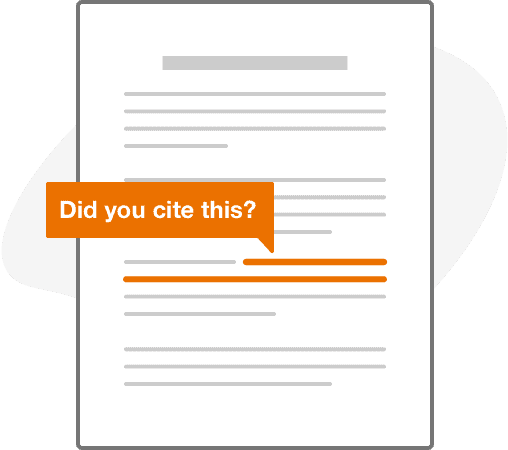
Check for Unintentional Plagiarism
Persistent use of the best grammar checker and spell checker you can find will help to shape up the style and substance of your composition. However, to ensure the integrity of your work and root out unintentional instances of academic dishonesty, you’ll also need to incorporate a subscription-based or free plagiarism checker for students.
The ability to scan your paper and check plagiarism and grammar before submitting your work is an invaluable tool for students. It’s so valuable, in fact, that students are not the only ones who consistently use this type of software.
Many teachers and professors use a service to ensure that student papers are original and include properly formatted and sourced citations for all reference materials. For some, this may be a consistent element of their grading process, while others may utilize one only when they feel there is a reason to do so.
What Exactly Does a Plagiarism Checker Do?
If you’ve used an online plagiarism checker before, you may be familiar with the process that these tools employ. For those who have never used one, it can be helpful to understand how these tools work and what you should expect as a result of using one.
The most basic free tools will scan your paper and provide you with a percentage that indicates how much of your work is original. This feature can be useful to a point, as some instructors and institutions set a percentage for the amount of similar text that is considered acceptable. This policy does not mean that they are lenient about academic dishonesty but, instead, that they recognize that similar or even matching word choice is not always an indicator of copying.
However, some schools do not tolerate any form of incremental plagiarism, period. In these institutions, “check paper for plagiarism” is likely a standard action when grading all papers.
With a free plagiarism checker, the percentage of word-for-word plagiarism in your text may be the only feedback you receive. Moreover, some of these providers may wade in unethical waters, and offer essay writing services in conjunction with their checking services. This is why many students and teachers prefer subscription-based checkers that focus on integrity, such as the EasyBib writing tools.
With our premium tools, you get more than just supporting proof that your paper is original and in your own words. Your writing is scanned for potentially matching text and areas that needs your attention is highlighted. We’ll provide you with the source of the matching text so you can review it and decide how to proceed. If you agree that a citation is needed, our citation tools and resources will provide you with the information you need to help format and insert the new sources in your text as well as your works cited page.
How Does the EasyBib Plus Online Plagiarism Checker Work?
The EasyBib Plus writing tool provides an all-in-one spell check, grammar review, and plagiarism checker that not only helps you with the paper you’re writing now but enables you to gain new knowledge and improve your writing for the future, too.
Our essay checker searches online for phrases, sentences, or passages that are similar to those in your paper. If it returns matching text, this may indicate that you have passages that are missing citations.
Just as with many checkers, our tool will tell you how many instances of matching text it finds in your paper. Our plagiarism tool is designed to do more than most free tools, however.
When a portion of your paper is flagged for review, we provide you with the source that it matches. As with our online spell check tool, you have the power to review each area and choose how to proceed. If you decide to cite the flagged text, you can review the suggested source and access our citation tools to help create a proper citation and start building a bibliography for your paper. Or, you may determine that no citation is needed, in which case it’s simple to dismiss the suggestion and continue to the next section.
If you’re unsure about how to proceed, our library of resources can help you learn more and make an educated decision. In this way, you gain more than just the ability to correct your work; over time, you can learn how to avoid plagiarism altogether.
Reasons Your Teacher May Run Your Paper Through a Plagiarism Detector
As stated previously, your teachers and professors grade papers with a fixed process that includes “check paper for plagiarism” as a standard, across-the-board action. Others may check for plagiarism only when they feel there is cause to do so. There are a few red flags that may stand out to them while reviewing a paper that would lead to their running a plagiarism check, including:
Style/Voice: Most teachers are familiar with the style and voice that you use in your writing. While most will hope that the feedback they provide when grading your work will help you to improve problem areas over time, a paper or essay that has a dramatically different style or voice than the work you’ve previously submitted can be a red flag.
Inconsistency: Changes in the font, font size, formality, formatting, and more may indicate that portions of a paper have been copied and pasted. If these inconsistent passages are not presented as quotations or don’t include citations, this may further indicate to your teacher that there’s plagiarism in the paper.
Old References: Part of a well-researched paper is verifying the legitimacy and relevance of your sources. While some older references may be acceptable depending on the topic, if all of your sources are outdated, it may lead your teacher to believe that you’ve recycled your own work or someone else’s.
Looking for a checker to try? With EasyBib Plus you get unlimited checks to give you peace of mind when turning in your papers!
What is Plagiarism?
If you’re looking for a free online plagiarism checker , you’re already aware that it’s not something you want to be found in your papers. However, you may still be wondering: what does plagiarism mean? It’s a reasonable question and one that merits exploring. After all, some of the actions and circumstances that fall within the plagiarism definition come as a surprise to those who only learn that they’ve committed them after it’s too late.
So what is plagiarism? To define plagiarism in the most basic sense, you might say that it is taking someone else’s ideas and words and passing them off as your own.
If your goal is avoiding plagiarism entirely, you’ll need to go beyond the basics to thoroughly define plagiarism, recognize it, and keep clear of it. Some examples of plagiarism that students find surprising include forgotten citations, poor paraphrasing, and re-submitting your own work in whole or in part for more than one assignment. This useful article provides more help in recognizing and understanding the different forms that academic dishonesty can take.
Of course, using your own words and ideas does not count as plagiarism, nor does using common knowledge . Basically, common knowledge is information that is well known by the average person. Examples of common knowledge:
- there are 12 months in a year
- the freezing point of Celsius is zero degrees
- Socrates was a Greek philosopher
So should you only include your original thoughts and common knowledge in your papers? Of course not! Research-based assignments are meant to demonstrate your skills as a researcher, after all, as well as your ability to build upon the work of others to formulate new ideas. To avoid accidentally committing an act that falls within the plagiarism definition when you’re using another person’s words or ideas, though, you need to give them proper credit. This means you’ll need to clearly identify direct quotations or properly paraphrase them when including them in your paper.
Regardless of your approach, you’ll also need to cite your sources according to the style your professor specifies. Generally, you will use MLA format for the arts and humanities and APA format for the sciences, but it’s always best to check with your instructor when you’re unsure.
If you know what style to use but still aren’t sure how to create your citations, don’t fret! Our library of resources includes free guides to help you learn about various styles so you can properly structure and place them. And our premium tools not only help you check grammar, spelling, and originality in your papers, but subscribers also enjoy access to our citation creation tools!
What are the Different Types of Plagiarism?
In addition to the question “what is plagiarism,” you may also be wondering, “why do students plagiarize?” While some students do intentionally plagiarize because they believe they can pass off someone else’s work as their own to avoid spending time on their assignments, many others do so accidentally. They may not understand how broad the plagiarism definition is or they haven’t learned how to research and cite their sources properly. That is why it is vital to recognize plagiarism in all of its forms if you wish to ensure the integrity of your work.
Examples of plagiarism & How to prevent it
Direct plagiarism:
Intentionally copying another person’s work without including a citation that gives credit to the source. When most students are asked to identify potential plagiarism examples and behaviors, this direct and deliberate act is what they think of first.
- Prevention: If you use an idea or quote from another source, cite it in the text. Make it clear that it was not your own words.
Incremental plagiarism:
Copying parts of another person’s work, such as phrases, sentences, or paragraphs without crediting the source. When deciding which tools to use to check a paper for plagiarism , instructors often seek out those that will identify incremental forms as well as instances of direct copying and similar phrasing.
- Prevention : Decide to either directly quote the phrases or sentences you want to use, or write a good paraphrase. In both cases, be sure to add a citation. Using a plagiarism checker could also help you identify problematic passages.
Self-plagiarism:
Academic self-plagiarism occurs when a student submits the same paper or parts of a paper for more than one assignment. When your instructors are grading your papers, they’re assessing your research and writing skills in the present. When you submit work that you completed in the past, they are both unable to evaluate your current skills and unaware that you haven’t completed the assignment.
- Prevention: Write a new paper for each assignment you’re assigned. If you feel strongly that your past work could enhance your new paper, speak to your instructor and ask for permission first.
Misleading citations:
Including a citation for a quote or idea that misrepresents the source material. This can occur if a student does not understand the reference they are citing; if a student includes a citation for a disreputable source; or the source material simply does not align with the idea or argument that the student has attributed to it.
- Prevention: Carefully review your assignment to understand it. As you research, take the time to evaluate each source notes . Remember, it’s better to have quality citations over an abundance of citations.
Invented sources:
If a reference in a student’s bibliography is found not to exist, it is considered an invented source. This may occur if a student couldn’t find a reputable source to back their argument, or if they needed to include additional references to meet the requirements of the assignment and chose to take an unethical shortcut rather than completing the required amount of research. No matter the reason, this behavior ultimately hurts them in the long run. Not only will they fail to gain the experience they need to conduct research in the future properly, but they’ll also experience significant consequences if they’re caught.
- Prevention: Set aside time to do proper research so you can find enough sources. Start creating a list of sources as you’re researching and take good notes. This will help you keep track of your sources so none are forgotten. If you do end up forgetting where a quote came from, a paper checker could help you pinpoint the original source.
Patchwriting/Spinning:
Patchwriting is often confused with paraphrasing, but there’s a significant difference. When you paraphrase, you demonstrate that you understand the topic well enough to restate it in your own words. When you patchwrite or spin, it is more akin to a word-swapping game; there’s no need to understand the subject, merely to have access to a thesaurus so you can substitute enough synonyms to mask the source material. This can be intentional, but it may also be a result of having a poor understanding of how to paraphrase.
- Prevention: Using your own words, write down the key points of the phrase or idea, and put them together in a sentence. Be sure to include a citation as well.
A good way to test if you’re patchwriting or paraphrasing is to remove your sources from view. If you can write about what you’ve read without looking at the source material, you likely understand it well enough to paraphrase it. If you have to review the source material with each new sentence or consult a thesaurus while writing about it (except when you’re adding direct quotations), you may be spinning your sources instead of paraphrasing them.
Academic Integrity Policies and Statements
If you’re still uncertain about what counts as plagiarism, look for your school’s/ organization’s policies on academic integrity and plagiarism. The policies of academic institutions usually cover what is considered plagiarism, the consequences of committing it, and how to avoid it. One great example is Purdue University’s Academic Integrity statement .
What are the Consequences of Plagiarism?
No matter the setting, plagiarism is not taken lightly, and the consequences can be significant. For a good reason, too! Whether in an academic or professional setting, the plagiarism consequences reflect the seriousness of the act, which is ultimately a form of theft that hurts everyone involved.
Just as with the theft of a tangible object, there can be legal punishments for plagiarism. It is, after all, a form of copyright infringement in many instances. A quick search for plagiarism articles will reveal that professional instances of intellectual theft have resulted in civil lawsuits and can even be criminally prosecuted under rare circumstances. In addition to the possible legal consequences, professionals may lose their jobs or have to start over in a new field after their acts of fraud are uncovered.
As a student, you’re likely to wonder what happens if you plagiarize in college or high school. While there will almost always be consequences for this behavior, there is no one-size-fits-all plagiarism sentence. Depending on the circumstances, academic dishonesty could result in outcomes such as:
- You might get a zero for the assignment in which the infringement occurred.
- You may receive a failing grade for the class. If it is a required course, this could leave you without enough credits to move on to the next level until you can repeat it and, in some instances, postpone graduation.
- You may be expelled from your school or university.
The academic dishonesty may be noted on your transcript, which can lead to you not getting into your preferred college, graduate school, or Ph.D. program in the future.
Nobody wants to be known as a fraud or to have a reputation for dishonesty follow them through their career. And, given the consequences that can extend beyond just their reputation, it’s no wonder that professional and academic writers who wish to avoid them take the time to understand the complete definition of plagiarism and run their work through a plagiarism checker before sending it out into the world.
Even the vigilant can fall prey to inferior tools, unfortunately. Before selecting a plagiarism checker, you should understand how they work and what they can (and cannot) detect.
How We Check for Plagiarism
When exploring how to check for plagiarism, most students and professionals conclude that including a checking tool in their revision process is not only helpful but necessary. When you consider the Herculean task of checking each line of your paper against the text of each of your resources, the benefits of a checker are clear. Moreover, this manual approach would only alert you to matching text in the sources you’re aware of, after all, and leaves the sources you haven’t reviewed untouched.
But, hang on. Why would sources you haven’t reviewed factor into your review? The answer to this lies in the plagiarism definition you learned above. What is plagiarism? It’s presenting someone else’s work or ideas as your own, intentionally or otherwise. It is not uncommon to uncover an idea while you’re researching a topic and later misremember it as your own. This might even occur years after you originally came across it.
You might wonder: how can plagiarism be avoided if you have to account for the source of every thought you include in your work? A few exceptions minimize the scope of this. Common knowledge about your topic does not need to be supported by a citation, nor does knowledge that you gained through your personal experience. Using a subscription-based or free plagiarism checker will help you locate any passages that may fall into these categories so you can review them and decide for yourself whether a citation is needed.
EasyBib Plus writing tools provide easy, convenient, and reliable support to help you find potentially missed citations and can help you improve your paper into a high-quality paper with integrity. Simply upload your paper, select the checker, then sit back and relax as the site scans your document. In mere moments, we’ll search the web for passages of similar text and highlight duplicate content for your review.
Regardless of the tools you use to help you revise and polish your work, it’s ultimately your responsibility to ensure that you’re writing and submitting ethical work. That’s why our tools go beyond the basics and require your participation. The tool never automatically makes changes to your paper, but only flags sections that may need your attention and provides you with the matching source so you can to make an educated decision.
If you find that a citation is needed, our citation tools can help you create properly formatted citations and develop a complete bibliography. And, if you review the passage and determine that the match is coincidental, you can dismiss the alert and move on to the next.
Seamless Citation Creation
Professional writers and students alike can find creating citations incredibly confusing. Nevertheless, they are an integral part of a well-written and researched paper and a requirement in almost all academic settings. But, have you ever wondered why they are so important? Citations really do have a purpose—other than driving us crazy— that make it necessary always to cite our sources.
We cite our sources for a few important reasons:
We need to give credit where credit is due. When you use a quote from someone else’s work, you need to give credit for using their words and ideas. Research is often based on the works and ideas of others. However, to include the words and ideas of another without giving them proper credit is to plagiarize, even if the act was unintentional.
In addition, showing that you’ve done proper research by including in text & parenthetical citations and a comprehensive list of sources to back up your arguments gives your work a layer of credibility that can help you earn the trust of your reader or teacher.
Readers can find the sources you used. When you’re writing high school or undergraduate papers, your only readers may be your instructors and peers. However, including citations at every level of writing helps to ensure that anyone who reads your work can access your sources to check their accuracy, learn more about your topic, and further their own research.
Sources can take your research and learning to the next level, too. When you are conducting research on a topic, checking the works cited or annotated bibliographies prepared by your sources can lead you down new avenues in your research to further develop your ideas and help you write your papers.
Correctly utilizing citations gives strength to your thoughts and opinions. Understanding the value of citations does not, unfortunately, make them any easier to create. We know how confusing it can be, but don’t throw in the towel on learning how to cite websites in MLA , create your APA citation website references, or format your works cited —this is where we come in!
While a free online plagiarism detector may tell you how much of your work is unoriginal and may even identify the passages that meet their plagiarize definition, a premium EasyBib Plus plagiarism checker account also gives you access to our powerful citation resources and generator so you can:
Scan your papers with the plagiarism tool to check for plagiarism-free work before you submit.
Review flagged passages to determine if they meet the plagiarism definition and create unlimited citations in APA format and MLA format for anything fitting the plagiarism meaning. Need more styles ? Check out our regular citation generator for thousands of choices and free resources to help you learn how to create an APA parenthetical citation , APA book citation , APA works cited , and so much more!
Build a full bibliography for your paper right along with your parenthetical or in-text citations, which can save you hours of work along the way compared to manually creating and formatting them.
How Else Do We Help You Improve Your Paper?
The EasyBib Plus plagiarism detector helps you check your content or paper for text that may be missing a citation—which may fall within the definition of plagiarism—to help ensure you don’t accidentally plagiarize. It also includes grammar check and spelling check tools to help identify errors and suggest grammatical tweaks that could help to elevate the level of your writing.
Running a plagiarism check couldn’t be easier! Just upload your paper to the online proofreader, and in a few moments we’ll have your writing and citing suggestions. And, there’s no need to worry about your paper after it’s been scanned.
Run a Grammar and Spell Check for Free!
There’s no denying that your schoolwork can be challenging at times, and your assignments can lead to some late nights even when you’ve started them early. The last thing you want is to submit assignments that don’t reflect your best effort, but it can occasionally be quite the juggling act to get everything done on time.
Why not let our plagiarism checker free up space on your calendar by helping you revise your papers quickly and efficiently? The EasyBib Plus paper checker is your one-stop shop to check for plagiarism, create citations, spot spelling mistakes, and receive feedback on your grammar and style.
When you proofread and do a manual spelling check on work that you’ve written, you’re more likely to overlook mistakes. This is even more likely if you’re pressed for time or trying to complete several different assignments at once. There are tricks to help minimize this, such as reading your work aloud to identify poor grammar or reading each sentence backward to find spelling errors. When time is of the essence, though, these solutions aren’t the most convenient or useful options. That’s why many students seek the assistance of online tools that will run a grammar and plagiarism check on their work.
Are you asking yourself, “ How do I check my grammar online ?” We’ve got the perfect checker for you! Our advanced tools help you find and correct grammar, spelling, and punctuation mistakes. Our targeted feedback and free writing and citing resources help you learn as you go to improve your writing over time.
The best part? You can use our grammar and writing tools any time of the day, any day of the year for! Looking to try it? Just upload or copy and paste your text into our online proofreader for a free grammar check with up to 5 suggestions, or sign up for EasyBib Plus today! EasyBib Plus gives you use of the plagiarism checker and unlimited access to suggestions that can help improve your spelling, sentence structure, punctuation, writing style, and grammar.
Published February 3, 2019. Updated April 9, 2020.
Written and edited by Michele Kirschenbaum and Melissa DeVrieze Meyer . Michele is a school library media specialist and the in-house librarian at EasyBib. You can find her here on Twitter. Melissa is a professional writer and editor based in New Jersey. She writes for academic brands and independent publishers about writing, grammar, and literature, and creates study and curriculum materials for ESL learners. You can find her on Twitter .
Visit our EasyBib Twitter feed to discover more citing tips, fun grammar facts, and the latest product updates.

Chuyển những câu sau sang câu bị động: The teacher is correcting her essay. She ...........................
- The teacher is correcting her essay.
She ...........................

Trả lời (1)
She is having the teacher correct her essay/ She is having her essay corrected by the teacher.
Bị động thể nhờ vả
Ta có cấu trúc:
have sb do st = have st done

Nếu bạn hỏi , bạn chỉ thu về một câu trả lời . Nhưng khi bạn suy nghĩ trả lời , bạn sẽ thu về gấp bội!

Lưu ý: Các trường hợp cố tình spam câu trả lời hoặc bị báo xấu trên 5 lần sẽ bị khóa tài khoản


Được đề xuất cho bạn
XEM NHANH CHƯƠNG TRÌNH LỚP 12
Lý thuyết Toán 12
Giải bài tập SGK Toán 12
Giải BT sách nâng cao Toán 12
Trắc nghiệm Toán 12
Giải Tích 12 Chương 1
Lý thuyết Ngữ Văn 12
Soạn văn 12
Soạn văn 12 (ngắn gọn)
Văn mẫu Vợ nhặt
Tiếng Anh 12
Giải bài Tiếng Anh 12
Giải bài Tiếng Anh 12 (Mới)
Trắc nghiệm Tiếng Anh 12
Unit 1 lớp 12 Home Life
Tiếng Anh 12 mới Unit 1
Lý thuyết Vật Lý 12
Giải bài tập SGK Vật Lý 12
Giải BT sách nâng cao Vật Lý 12
Trắc nghiệm Vật Lý 12
Vật lý 12 Chương 1
Lý thuyết Hóa 12
Giải bài tập SGK Hóa 12
Giải BT sách nâng cao Hóa 12
Trắc nghiệm Hóa 12
Hoá Học 12 Chương 1
Sinh học 12
Lý thuyết Sinh 12
Giải bài tập SGK Sinh 12
Giải BT sách nâng cao Sinh 12
Trắc nghiệm Sinh 12
Sinh Học 12 Chương 1
Lý thuyết Lịch sử 12
Giải bài tập SGK Lịch sử 12
Trắc nghiệm Lịch sử 12
Lịch Sử 12 Chương 1 Lịch Sử Thế Giới
Lý thuyết Địa lý 12
Giải bài tập SGK Địa lý 12
Trắc nghiệm Địa lý 12
Địa Lý 12: Địa Lý Việt Nam
Lý thuyết GDCD 12
Giải bài tập SGK GDCD 12
Trắc nghiệm GDCD 12
GDCD 12 Học kì 1
Công nghệ 12
Lý thuyết Công nghệ 12
Giải bài tập SGK Công nghệ 12
Trắc nghiệm Công nghệ 12
Công nghệ 12 Chương 1
Lý thuyết Tin học 12
Giải bài tập SGK Tin học 12
Trắc nghiệm Tin học 12
Tin học 12 Chương 1
Hỏi đáp lớp 12
Tư liệu lớp 12
Xem nhiều nhất tuần
Video: Vợ nhặt của Kim Lân
Đáp án đề thi THPT QG môn Hóa
Đáp án đề thi THPT môn GDCD
Đáp án đề thi THPT QG môn Sử
Đáp án đề thi THPT QG môn Địa
Đáp án đề thi THPT QG môn Văn
Đáp án đề thi THPT QG Tiếng Anh
Đáp án đề thi THPT QG môn Sinh
Đáp án đề thi THPT QG môn Toán
Đáp án đề thi THPT QG môn Vật lý
Video ôn thi THPT QG môn Sinh
Video ôn thi THPT QG môn Văn
Video ôn thi THPT QG môn Vật lý
Video ôn thi THPT QG Tiếng Anh
Video ôn thi THPT QG môn Hóa
Video ôn thi THPT QG môn Toán
Vợ chồng A Phủ
Sóng- Xuân Quỳnh
Người lái đò sông Đà
Tuyên Ngôn Độc Lập
Khái quát văn học Việt Nam từ đầu CMT8 1945 đến thế kỉ XX
Đất Nước- Nguyễn Khoa Điềm
Chiếc thuyền ngoài xa
Ai đã đặt tên cho dòng sông
Bạn vui lòng đăng nhập trước khi sử dụng chức năng này.
The Language Gym
By gianfranco conti, phd. co-author of 'the language teacher toolkit', 'breaking the sound barrier: teaching learners how to listen', 'memory: what every teacher should know' and of the 'sentence builders' book series. winner of the 2015 tes best resource contributor award, founder and ceo of www.language-gym.com, co-founder of www.sentencebuilders.com and creator of the e.p.i. approach., five things i do when i correct my students’ essays.

My Ph.D study,Conti (2004), (as cited in Macaro,2004 and 2005, Ko Yin Sun, 2009, Goonshooly, 2012, Barjesteh, 2014, Cohen and Macaro, 2014, etc.) has provided me with great insight into the strengths and limitations of error correction. The following is a very concise list of what I believe to be the most important strategies to deploy in the error treatment of surface level errors in foreign language writing.
Please note, this is something teachers can afford to do when they have a relatively light timetable or with specific students who are particularly problematic and need a lot of attention. I wouldn’t recommend this approach with every single class and student of yours as it is very time-consuming. In language instructions the focus should be on teaching not on fixing .
1.Focus on the most important issues
No point in focusing on every single error you find in your students’ writing when you are giving individual feedback on their essays. There is only so much attention a student can invest in the remedial learning process. Select only a few errors (3 to 5) at a time using the following criteria
- Errors that can be treated – no point in focusing an absolute beginner learner on mistakes involving the use of the pluperfect … Only treat errors for which the learner is developmentally ready;
- Errors that seriously impact understanding – these errors are the most important to deal with as they mislead the reader;
- Errors that keep recurring and seem impervious to correction – these errors need a lot of attention because once an error is fossilized it is very difficult to eradicate. Since these errors require a lot of work, try and prioritize the ones which, in your professional judgement, are more important (e.g. the ones that mighty penalize a student in a forthcoming exam);
- Errors that the learner would like to eradicate – it is my belief, controversial amongst some colleagues, that the learner should have a say as to what they should address in their remedial learning process. The rationale for this is that since s/he is going to be main the agent in this process, the fact that s/he chooses which errors to target may enhance their intentionality to eradicate error.
Do not address, in individual feedback, errors that are common to most of the class, as they can be the focus of a series of remedial lessons for the class as a whole
2. Find out what the root causes of error REALLY are
One common mistake teachers make in the corrective process, is to give all errors the same blanket treatment (be it direct/indirect correction with or without explanation or editing instruction) as if they were all caused by the same cognitive process(es). A bit like some doctors do, by giving a broad spectrum antibiotic for any kind of infection.
Errors can be caused by either (a) a declarative knowledge failure (the learner does not know the rule) or (b) a Procedural knowledge failure (the learner does know the rule and can self-correct, but did not apply it correctly or forgot to apply it in a given context because of processing inefficiency issues – e.g. cognitive overload, interference, etc.). It is important to identify the correct source of error before dismissing it as a ‘careless’ mistakes. There is usually more to an error than meets the eye.
In my study I used a number of research tools to investigate my subjects’ errors and the best one was definitely asking the students to edit the essays they wrote under think-aloud protocol conditions (i.e. they verbalized their thoughts as they attempted to correct). The knowledge I gained from that process was crucial to the success of my error treatment experiment.
3.‘Make it personal’
In my opinion, like any other type of instruction, error correction is greatly enhanced by making it as personal as possible a process, especially when we are dealing with weaker and/or less confident learners. One-to-one conferences are the best way to start the never-ending dialogue between teacher and student that the corrective process should really become. Using the page or the audio track as an interface between the student and the teacher makes the process much more distant and impersonal; the human contact, on the other hand, especially in the presence of judiciously gauged motivational feedback can do wonders for student’s self-efficacy and intentionality.
Let us not forget that the teacher’s role in the success of any remedial learning is crucial just as it is in any other kind of instruction. I often use the analogy of the person who wants to lose/gain weight in the gym. If you look at the rates of people who carry on training after the first three-four sessions, those with a personal trainer/life coach are less likely to drop out by a whopping 50 %! Why? Because a lot of us need encouragement, reminders, praise and, sometimes, a good telling-off…
When embarking on the remediation process, the teacher needs to take on a role alike the one of a ‘personal trainer’ since, as I shall explain below, errors are not eradicated in one go, it may take months or in certain cases, when an error is fossilized, even years. S/he will have to remind, prod, encourage, push the learner to keep working on the target mistakes.
It goes without saying that like every personal trainer the corrector must be inspiring and empathetic both emotionally and cognitively with the correctee.
4.Ensure there is a serious and sustained cognitive investment on the learner’s part
Several studies including mine have identified lack of student cognitive/personal investment in the error treatment as a major determinant of the failure of corrective interventions. Student writers do not look at the teacher’s corrective feedback and when they do they are superficial and do not follow it up. Teachers often do the same. They do a one-off remedial lesson on finding masses of students making the same mistake, then they move on. What I learnt in the course of my investigation is that for error to be eradicated (as mentioned above) both teachers and students must work hard. The students must put a lot of effort in the process at many levels: research, self-study, writing practice, self-monitoring and introspection.
Scaffolding the feedback-handling process in order to involve the student actively in the process is crucial, in this respect. Feedback-handling activities that students may be asked to perform on receiving feedback include: explaining the teacher correction; hypothesizing why the mistakes was made; describing what the rule that was broken is; producing student-generated examples of that rule across various contexts; produce a mini-lesson to deliver to a group of peers,ect.).
In my study, all of my informants reported drawing great benefits from such activities as they enhanced their self-knowledge as to the mistakes they were more likely to make to a point that they reported looking for those mistakes without much thinking before handing in their written pieces.
Another ingenious way of involving the students in the corrective process is to ask the students to step in before the essay is even completed and the feedback given. How? By asking them to annotate on margin whilst writing the essay any doubt they may have about the deployment of a grammar structure or lexical item. I use this technique a lot and it pays great dividends. This technique, that I call LIFT (Learner Initiated Feedback Technique) is dealt with in greater detail in a dedicated post of mine on this blog (here: ‘L.I.F.T. – an effective writing-proficiency and metacognition enhancer’).
5.Provide extensive practice
Many interventionist studies which involved editing instruction have failed whilst others have succeeded in enhancing grammar and/or lexical accuracy based on their duration and intensity. As already hinted above, learners need extensive practice to eradicate the target errors. Why? Because in learners’ Interlanguage system the wrong and correct representations of a grammar rule that has not been fully or correctly learnt coexist and often have equal weight (or, when the wrong form is fossilized, this will have greater weight). This entails that when the brain needs to apply that specific grammar structure the correct and the incorrect representation will both compete for retrieval. Extensive practice (highly monitored at the beginning) is required for the correct representation of the rule to acquire greater weight until it has become so strong in terms of memory trace to win the retrieval ‘competition’.
The extensive practice envisaged should occur:
- across a wide range of semantic contexts;
- in syntactically simple sentences to start with, moving gradually to more complex and longer chunks of text;
- in highly monitored performances (such as non-timed essays/translations) to start with and at a later stage, in the context of less monitored ones (such as timed essays or oral conversation).
Teachers are very busy people and one cannot always do all of the above as well as they would like to. However, these strategies can make a serious difference, in my personal experience, when applied to error treatment consistently. I suggest, if one does not have the time to do all of the above with every single student one teaches, to implement these strategies at least with the most needy of our learners, or with the ones that currently, in you opinion, are not gaining much benefit from your corrective feedback.
I deal with the issue of correction much more extensively in a research-based article of mine (‘ Why teachers should not bother correcting errors in their students’ writing (not the traditional way at least’) :
More on this topic in the book I co-authored with Steve Smith : ‘The Language Teacher Toolkit’ available on http://www.amazon.co.uk and http://www.amazon.com.

Share this:
One thought on “ five things i do when i correct my students’ essays ”.
[…] https://gianfrancoconti.wordpress.com/2015/05/12/five-things-you-should-do-when-you-correct-your-stu… ; #MiniForFacebook […]
Like Liked by 1 person
Leave a comment Cancel reply

- Already have a WordPress.com account? Log in now.
- Subscribe Subscribed
- Copy shortlink
- Report this content
- View post in Reader
- Manage subscriptions
- Collapse this bar
You must be logged in to post a comment.

- Trắc Nghiệm Trực Tuyến
- Phòng tự học
- Sách Ôn Thi Điểm 10
Bài tập tổng ôn câu bị động (Passive Voices) có đáp án chi tiết

BÀI TẬP ÁP DỤNG
Exercise 1: Chuyển các câu sau sang câu bị động
- Our teacher wants us to prepare our lessons carefully.
Our teacher .....................................................................................................................................................
- They expected me to finish my work early.
They expected .................................................................................................................................................
- Is she making big cakes for the party?
Are ...................................................................................................................................................................
- The house needs cleaning.
The house .......................................................................................................................................................
- It was impossible to preserve river water in the past.
River ...............................................................................................................................................................
- He made me stay outside yesterday.
I .......................................................................................................................................................................
- The teacher let us go home early last week.
We ...................................................................................................................................................................
- He had the waiter carry the luggage home.
He had .............................................................................................................................................................
- I got the postman to post the letter for me.
I got .................................................................................................................................................................
- Turn on the lights!
The lights ........................................................................................................................................................
- They know that English is an international language.
English ............................................................................................................................................................
- Don't do that silly thing again.
Don't let ..........................................................................................................................................................
- We'll continue to use this phone.
This phone ......................................................................................................................................................
- Did people make jeans two hundred years ago?
Were ..............................................................................................................................................................?
- They opened the road 10 years ago.
The road ..........................................................................................................................................................
We. .................................................................................................................................................................
- You should open the wine 3 hours before you use it.
The ..................................................................................................................................................................
- It's your duty to make tea for the party.
You .................................................................................................................................................................
- The man gave me a piece of paper with his address on it.
- The teacher is watching them work.
They ................................................................................................................................................................
- What subjects have people discussed today?
What ...............................................................................................................................................................
- The boy broke the window and took away some pictures.
The window ....................................................................................................................................................
- It is impossible to solve this problem immediately.
This problem ...................................................................................................................................................
- She wishes someone to carry her luggage to the hotel.
She wishes ......................................................................................................................................................
- They are going to repair the bridge next month.
We are .............................................................................................................................................................
- They enjoy their parents taking them to the zoo.
They enjoy ......................................................................................................................................................
- People supposed that the lion had escaped from the cage.
The lion ...........................................................................................................................................................
- I saw them playing football in the park.
She ..................................................................................................................................................................
- I remembered Nam offering me a beautiful present on my birthday.
I remembered ..................................................................................................................................................
Exercise 2: Chọn phương án đúng để hoàn thành mỗi câu sau đây
- using B. are used C. used D. they used
- was held B. is held C. is being held D. will be held
- to study B. study C. studying D. studied
- Her fiance is said from Harvard University five years ago.
- was choosing B. chosen C. has been chosen D. have been chosen
- All flights were cancelled by them of fog.
- All flights were because of fog were cancelled.
- All flights were because of fog cancelled.
- All flights were cancelled because of fog.
- will have been B. should have been
C. was to have been D. may not have been
- being left B. leaving C. be left D. leave
- are known B. were used C. have been D. will have
- being invited B. to invite C. to be invited D. inviting
- wrote B. written C. were written D. be written
- punished B. was punished C. punish D. punishing
- seen B. see C. saw D. be seen
- Nobody is allowed to use their cell phones during the examination.
- Nobody is allowed using their cell phones during the examination.
- Nobody isn't allowed to use their cell phones during the examination.
- Nobody isn't allowed using their cell phones during the examination.
- to be congratulated B. being congratulated
C. to be congratulating D. to congratulate
- has been destroyed B. have been destroyed
C. were destroyed D. was destroyed
- not are used B. is not used C. didn't used D. are not used
- repairing B. to be repaired C. repaired D. repairing/to be repaired
A. being followed B. are followed C. follow D. following
- bite B. bit C. ever been bitten D. ever been bit
- was cleaned B. cleaned C. cleaning D. clean
- is expected B. expected C. are expected D. was expected
- do B. done C. did D. to do
- need typing B. needn't be typed C. need to type D. needn’t to typing
- is made B. has made C. made D. was made
Exercise 3: Chia dạng đúng của động từ trong ngoặc
- She expects (promote) soon, but things seem to go wrong.
- The children were made (go) to bed at 10:00 pm.
- The parcel is supposed (deliver) this evening.
- The children agreed (divide) the candy equally.
- I expected (invite) to the party, but I wasn't.
- The man was heard (say) goodbye to the host in Chinese.
- A strange man (watch) coming into your house at the time.
- I don't enjoy (laugh) at by other people.
- I don't appreciate (interrupt) when I'm speaking.
- Trees (plan) since it stopped raining.
- The house (build) two years ago.
- We can't go along here because the road (repair) now.
- We (wake) by a loud noise last night.
- Today, many serious childhood diseases (can prevent) by early immunization.
- The telephones (invent) by Alexander Graham Bell.
- Lots of houses (destroy) by the earthquake last week.
- Gold (discover) in California in the 19th century.
- The preparation (finish) by the time the guests arrived.
- He had the chair (mend) by the neighbors.
- Let your book (open)
- It's impossible (rebuild) the school.
- They suggested that the test (make) easier.
- I wish traffic regulation (obey)
- It (think) that she will win the contest.
|
|
|
|
|
| Our teacher . | Theo cấu trúc:
Vì chủ ngữ "our teacher" và tân ngữ "our lessons" không phải là một nên khi chuyển sang cấu bị động sẽ theo công thức sau:
|
|
| They . | Theo cấu trúc:
|
Luyện bài tập vận dụng tại đây!
TIẾNG ANH LỚP 12
CHUYÊN ĐỀ 1: NGỮ PHÁP
- A.1. THÌ ĐỘNG TỪ - VERB TENSES
- A.2. SỰ PHỐI HỢP THÌ – THE SEQUENCE OF TENSES
- A.3. SỰ HOÀ HỢP GIỮA CHỦ NGỮ VÀ ĐỘNG TỪ SUBJECT AND VERB AGREEMENTS
- A.4. ĐỘNG TỪ KHUYẾT THIẾU – MODAL VERBS
- A.5. CỤM ĐỘNG TỪ - PHRASAL VERBS
- A.6. THỨC GIẢ ĐỊNH - THE SUBJUNCTIVE MOOD
- A.7. DANH ĐỘNG TỪ (GERUND) VÀ ĐỘNG TỪ NGUYÊN MẪU (INFINITIVE VERB)
- A.8. CÂU HỎI ĐUÔI - TAG QUESTIONS
- A.9. SO SÁNH - COMPARISON
- A.10. TRẬT TỰ CỦA TÍNH TỪ - THE ORDERS OF THE ADJECTIVES
- A.11. MẠO TỪ - ARTICLES
- A.12. CẤU TẠO TỪ - WORD FORMS
- A.13. TỪ CHỈ SỐ LƯỢNG - EXPRESSIONS OF QUANTITY
- A.14. GIỚI TỪ - PREPOSITIONS
- A.15. LIÊN TỪ - CONJUNCTIONS
- A.16. CÂU BỊ ĐỘNG - PASSIVE VOICES
- A.17. CÂU ĐIỀU KIỆN - CONDITIONAL SENTENCES
- A.18. CÂU TƯỜNG THUẬT - REPORTED SPEECH
- A.19. ĐẢO NGỮ - INVERSIONS
- A.20. MỆNH ĐỀ QUAN HỆ - RELATIVE CLAUSES
- A.21. THÀNH NGỮ - IDIOMS
- A.22. CỤM TỪ CỐ ĐỊNH – COLLOCATIONS
- A.23. MỘT SỐ CẤU TRÚC THÔNG DỤNG
CHUYÊN ĐỀ 2: TỪ VỰNG (VOCABULARY)
- B.1. CHỦ ĐỀ 1: CULTURE IDENTITY
- B.2. CHỦ ĐỀ 2: EDUCATION
- B.3. CHỦ ĐỀ 3: URBANIZATION
- B.4. CHỦ ĐỀ 4: GLOBAL WARMING
- B.5. CHỦ ĐỀ 5: NATURAL IN DANGER
- B.6. CHỦ ĐỀ 6: ENERGY
- B.7. CHỦ ĐỀ 7: ENDANGERED SPECIES
- B.8. CHỦ ĐỀ 8: PRESERVATION
- B.9. CHỦ ĐỀ 9: VOLUNTEER WORK
- B.10. CHỦ ĐỀ 10: HEALTHY LIFESTYLE AND LONGEVITY
- B.11. CHỦ ĐỀ 11: LIFE STORIES
- B.12. CHỦ ĐỀ 12: FAMILY LIFE
- B.13. CHỦ ĐỀ 13: RELATIONSHIPS
- B.14. CHỦ ĐỀ 14: FILM AND MUSIC
- B.15. CHỦ ĐỀ 15: ENTERTAINMENT
- B.16. CHỦ ĐỀ 16: POPULATION
- B.17. CHỦ ĐỀ 17: GENDER EQUALITY
- B.18. CHỦ ĐỀ 18: ARTIFICIAL INTELLIGENCE
- B.19. CHỦ ĐỀ 19: WONDERS OF THE WORLD
- B.20. CHỦ ĐỀ 20: JOBS
- B.21. CHỦ ĐỀ 21: LIFE IN THE FUTURE
- B.22. CHỦ ĐỀ 22: INVENTIONS
- B.23. CHỦ ĐỀ 23: WAYS OF SOCIALIZING
- B.24. CHỦ ĐỀ 24: INTERNATIONAL ORGANIZATIONS
- B.25. CHỦ ĐỀ 25: MASS MEDIA
- B.26. CHỦ ĐỀ 26: SPORTS
- B.27. CHỦ ĐỀ 27: NEW WAYS TO LEARN
- B.28. CHỦ ĐỀ 28: CELEBRATIONS
- B.29. CHỦ ĐỀ 29: SPACE CONQUEST
- B.30. CHỦ ĐỀ 30: SCIENCE
CHUYÊN ĐỀ 3: NGỮ ÂM
- C.1. PHÁT ÂM - PRONUNCIATION
- C.2. TRỌNG ÂM - STRESS
CHUYÊN ĐỀ 4: ĐỌC HIỂU
- D.1. KỸ NĂNG ĐỌC HIỂU
CHUYÊN ĐỀ 5: ĐỌC ĐIỀN TỪ
- E.1. 3 DẠNG CHÍNH TRONG ĐIỀN TỪ VÀO ĐOẠN VĂN
- E.2. CÁC LOẠI CÂU HỎI TRONG ĐIỀN TỪ VÀO ĐOẠN VĂN
CHUYÊN ĐỀ 6: ĐỒNG - TRÁI NGHĨA
- F.1. TABLE OF SYNONYMS/ RELATED WORDS AND ANTONYMS
CHUYÊN ĐỀ 7: TÌM LỖI SAI
- G.1. LỖI SAI NGỮ PHÁP CẤU TẠO TỪ VÀ TỪ LOẠI
- G.2. CẤU TRÚC SONG SONG
- G.3. CÂU CHỦ ĐỘNG - CÂU BỊ ĐỘNG
- G.4. MỆNH ĐỀ
Hãy viết chi tiết giúp Tự Học 365

What Makes an Effective Teacher? Analytical Essay
- To find inspiration for your paper and overcome writer’s block
- As a source of information (ensure proper referencing)
- As a template for you assignment
An effective Teacher
Pedagogy and practice, the way these factors interact, professional characteristics, access and fairness, classroom climate and management, impact of educational reforms, the nature of learners and learning.
From the image of an effective teacher, the analysis will be based on the teacher’s qualification as well as career history, her skills of instruction, her professional characteristics as well as the classroom setting or management (Jones, Jenkin, & Lord, 2006).
In general, there are three major factors espoused from the image and include the setting of classroom, skills of teaching and professional characteristics.
As depicted from the image, each of these factors provides not just complementary ways, but also unique ways that the teacher can comprehend their contribution. It must be understood that they all work or interact to avail value-based teaching.
From the image, effective teaching entails making hard and principled decisions, making cautious decisions, as well as respecting the intricate nature of the mission of educational (Farr, 2010).
On top of the technical skills and knowledge the teacher uses in his everyday practice, he or she must be conscious of his profession’s ethical direction.
Based on this, the primary mission of the effective teacher depicted in the image is to encourage the advancement of dispositions, skills as well as understanding, whilst recognizing considerately and sensibly an array of learners’ conditions and requirements.
According to Stronge (2007) teachers who are effective should have a collection of instructional strategies and methods, and also remain reflective and critical in relation to their practice. In general, his or her professional characteristics or responsibilities should be focused on providing education to students.
In nature, these attributes of an effective teacher different. From the image, it can easily be made out that skills of instruction and professional aspects are key factors relating to what is brought to the job by a teacher.
In the image, the professional features are basally the continuing trends of behavior that are blended to drive the activities of the teacher (Farr, 2010). The micro-behaviors are some of the examples of these things and are covered by the skills of instruction.
Generally, in as much as skills of instruction can be acquired through learning, managing to carry them forward for the time the teacher is still actively involved in his work depends on the nature of professional aspects.
Different from the two factors discussed above is the classroom setting. Generally, it connotes or denotes a measure of results delivered by professional characteristics and skills of instruction.
The classroom setting allows the instructor to fully comprehend or know the level of contentment of her students in class. The contentment is in the context of different dimensions of classroom setting created by the teacher and which functions to instigate or initiate student motivation to learn.
From the image, the professional skills or characteristics help the teacher to hold his student to account. This generally involves setting up clear objectives as well as parameters in order to hold students responsible for their performance in class.
This behavior pattern makes it easier for the instructor to fully display skills of instruction such as offering opportunities for students or learners to be in charge of their conduct or to be accountable in their studies.
When this happens, skills of instruction are put into use and students are likely to feel that there is some feeling or sense of orderliness in class or even some form of support that allows them to attempt novel things (Farr, 2010).
This should not be generalized as it is only an example relating to the image used in discussion. Other methods of instruction might turn out to be highly effective in other settings with different students.
It must be emphasized that in education, there are many ways that determine the way instructors choose the approaches to employ in classroom in order to fully influence the way his or her students feel about the instruction in general.
According to Farr (2010) professional aspects of an effective teacher are behavior patterns, which are regularly displayed. From the image, professional characteristics are how the teacher manages to execute his job.
They mainly involve things such as values and self-image or simply, the inspiration that drives performance, as well as the manner in which the teacher routinely approaches or responds to circumstances.
Teachers who are effective always depict unique combinations of features that foster or generate success for their students (Jones, Jenkin, & Lord, 2006).
As seen in the image, the professional aspects are grouped into a number of classes including thinking, professionalism, leading, prospect, and relating with other people and, setting and planning.
For one to be called an effective teacher, he or she must have strength in each of the mentioned aspects. When the mentioned aspects are strongly held and enacted they form a powerful foundation for professionalism in the teaching job.
Respect for other people, as factor, emphasizes all things that are done by a teacher who is effective, and is normally concerned with ensuring that everyone treats not just pupils but also other school members with respect (Jones, Jenkin, & Lord, 2006).
Teachers who are highly effective unequivocally regard others with high value, as well as respect the diversity within their school. A teacher who is effective usually manages to create a great feeling of community not just in the class, but also in the entire school.
Teachers who are effective also provide support and challenge. That is, they do not only cater for the needs of students, but also continually express the expectations as well as build the self-esteem of students in a way that can succeed in life and as learners.
In most circumstances, teachers who are effective usually display confidence, expressing hopefulness regarding their own abilities to deliver in class. The confidence grows as time goers by to a point that the teacher feels like he or she can now deliver in most situations.
Teacher who are effective draw on their own experience to help the not just students but also the entire school to achieve their objectives (Jones, Jenkin, & Lord, 2006). This can be done through shaping policies and procedures used in schools.
Because teachers who are effective are always committed, they are usually consistent and fair, and spend most of their class time building trust with their students.
Teacher who are effective are have been known be genuine and usually create the conducive environment that allows students to venture out, express themselves fully and are usually not troubled about making mistakes. In the teaching profession, this is a very important point for initiating learning.
The progress of these teachers in their profession is partly based on the fact that they stick to the objectives or believes of their profession.
These teachers are usually supportive of their students, and their professional feeling is at the core or center of effective teaching. When taken together, these characteristics of a teacher who is effective result in increased concern for students as well as their success.
According to Stronge (2007) classroom climate or setting is the general perception by students of the way it feels like being in a classroom of under a particular teacher. In this case, such perceptions or feelings impact the motivation of every student not just to learn, but also perform according to their abilities.
Jones, Jenkin and Lord (2006) indicate that teachers who are effective use their behaviors, skills as well as knowledge to create, in their classrooms, a learning setting that effective. These teachers create settings that optimize learning opportunities, in which students are not just well managed, but also encouraged to learn.
Order in classrooms is always important; therefore, from the viewpoint of students, they are always anticipating an instructor who can create orderliness and a sense of security as such aspects gives them an opportunity to take actively part in the class.
Jones, Jenkin and Lord (2006) indicate that the setting in classroom also depicts considerable relationships with professional aspects and teacher skills.
That is, the level or extent that a teacher is willing to develop their characteristics as well as skills that impact classroom environment, can engage or motivate his or her students effectively.
As Stronge (2007) established, the progress of students is considerably impacted by an instructor who exhibits both high levels of teaching skills and professionalism. These factors can result in the establishment of favorable environment in classroom.
Farr (2010) based on lucid proof of the progress of students in classroom; the teaching profession is a platform for professional development. In particular, it stresses the significance and influence of teachers in enhancing school and classroom standards.
Generally, teaching that is effective develops on a daily basis, supported by research that impacts the practices and beliefs of educators. It mainly avails higher standards for instructors mainly certification, as well as provision of in-house training for professional teaching staff (Farr, 2010).
Furthermore, support and training particularly time for teachers not to plan, but also to learn together and from each other.
With educational reform, instructors are repetitively challenged to adapt instruction mainly to diverse needs of students whilst maintaining high teaching standards (Jones, Jenkin, & Lord, 2006). With inclusion, all students get to learn best, especially when respect diverse ways of carrying out things.
With time and with effective instructional guidance and support, learners who are successful can easily create consequential, consistent representations of knowledge. In addition, the strategic learning aspect requires students to be led towards the set goals.
In other words, students are supposed to not just generate, but also pursue goals that pertinent (Stronge, 2007). Effective teachers in this regard must create student learning goals that are meaningful and in line with their educational and personal aspirations and interests (Stronge, 2007).
In addition, they are supposed to assist learners to integrate and acquire knowledge and also learners to develop, apply, and assess their strategic skills of learning using approaches such as thematic organization.
Farr, S. (2010). Teaching as leadership: the highly effective teacher’s guide to closing the achievement gap. San Francisco, SC.: Jossey-Bass.
Jones, J., Jenkin, M., & Lord, S. (2006). Developing effective teacher performance. Thousand Oaks, CA.: Paul Chapman.
Stronge, J. (2007). Qualities of effective teachers. Alexandria, Va. : Association for Supervision and Curriculum Development.
- Primary School Teachers' Attitudes towards Teaching and Testing Vocabulary
- CREDE Standards in US
- Differentiated Instruction’ Strategies and Benefits
- Individualizing Instruction for Gifted in Mathematics
- Educational Psychology: Windows on Classrooms
- Teachings Methods in Modern Educational System
- Vision for Your Teaching and Learning & Role as a Teacher-Leader or Teacher-Researcher
- Conceptual Framework of a Study About Teachers` Practical Knowledge
- Health Instruction in Teaching
- Development of Teaching Study
- Chicago (A-D)
- Chicago (N-B)
IvyPanda. (2019, June 25). What Makes an Effective Teacher? https://ivypanda.com/essays/effective-teacher/
"What Makes an Effective Teacher?" IvyPanda , 25 June 2019, ivypanda.com/essays/effective-teacher/.
IvyPanda . (2019) 'What Makes an Effective Teacher'. 25 June.
IvyPanda . 2019. "What Makes an Effective Teacher?" June 25, 2019. https://ivypanda.com/essays/effective-teacher/.
1. IvyPanda . "What Makes an Effective Teacher?" June 25, 2019. https://ivypanda.com/essays/effective-teacher/.
Bibliography
IvyPanda . "What Makes an Effective Teacher?" June 25, 2019. https://ivypanda.com/essays/effective-teacher/.
Get the Reddit app
Dedicated to open discussion about all things teaching. Please read the rules before posting. Mail sent directly to mods instead of modmail will be ignored. ██████████ ██████████ Brand new & low karma accounts: please be aware your post may not show up and will need to be screened and manually approved. ██████████ ██████████ No crossposting - Please do not link posts from r/Teachers in other subs, and do not link posts from other subs here.
When a student corrects you, and they're right.
I teach high school Spanish on the east coast, and it's my fifth year as a teacher. It's our first week of classes. During instruction I messed up a translation and, essentially, got owned by a student in front of the class.
I feel like I handled it well. I praised the student for paying attention and for holding me accountable, but it's still bugging me. I imagine that this is something many teachers have been through. What do you all do in this situation? Have there been times when this went well, or not so well?
Thanks and best of luck to everyone in the new year!
By continuing, you agree to our User Agreement and acknowledge that you understand the Privacy Policy .
Enter the 6-digit code from your authenticator app
You’ve set up two-factor authentication for this account.
Enter a 6-digit backup code
Create your username and password.
Reddit is anonymous, so your username is what you’ll go by here. Choose wisely—because once you get a name, you can’t change it.
Reset your password
Enter your email address or username and we’ll send you a link to reset your password
Check your inbox
An email with a link to reset your password was sent to the email address associated with your account
Choose a Reddit account to continue
Chatgpt: disruptive or constructive.
Thursday, Jul 18, 2024 • Jeremiah Valentine : [email protected]
What is Chat GPT?
ChatGPT is a popular emerging technology using Artificial Intelligence. GPT stands for Generative Pre-trained Transformer, which describes an AI program that looks for patterns in language and data learning to predict the next word in a sentence or the next paragraph in an essay. The website has a friendly interface that allows users to interact with AI in a n efficient conversational tone . ChatGPT provides another opportunity for students, instructors, researchers, workers, and others to find practical solutions to everyday and complicated problems.
At the root of this conversation is Artificial Intelligence. I plan to explore applicable uses of AI and ChatGPT in the classroom , entrepreneurial potential uses, and applications in industry .

Everyday Uses of Artificial Intelligence
The use of Artificial I ntelligence varies based on the user and their end goal. While many individuals will use certain programs or websites to meet specific objectives , many companies and apps have begun to utilize this emerging technology to better meet their customer's needs.
Duolingo is a popular foreign language learning application that I use to supplement my Spanish studies . The app uses Artificial Intelligence to assess users' knowledge and understanding as they interact with the program , thus streamlining users learning outcomes.
As another example, Khan Academy is a free online resource that helps teachers and students learn any level of math or other grade school topics for free. They have created Khanmigo , using AI. The model acts as a tutor that helps work through a problem while not directly providing the answer. It can assist in writing an essay or solving a complex math problem step by step.
These everyday applications continue a trend of companies implementing this new technolog y into students and teachers' lives . . This new AI technology also allows business professionals to enhance aspects of their processes.
Entrepreneurs, A.I. and the Advantages
While AI already provides companies and organizations with new ways to interact with and better support their customers, AI could also provide emerging industries and entrepreneurs with new paths to business success.
According to Entrpreneur.com, most businesses currently use AI for customer service purposes , however , AI could also help entrepreneurs create effective spreadsheets cataloging useful data with accuracy that can be incredibly specific or broad. Specifically with customer service, AI can quickly find what a customer needs and solve their problems efficiently. It could also analyze how effective marketing campaigns are influencing customers’ purchases.
As I researched for more information about this topic, I found an article in The Journal of Business Venturing Insights published in March 2023, sharing different techniques business students can use ChatGPT as an asset to generate entrepreneurial business pitches. The article titled “ The Artificially Intelligent Entrepreneur” written by Cole Short, an Assistant Professor of Strategy at Pepperdine University, and Jeremy C. Short, a UTA alumni and Professor at the University of North Texas at Denton, showcased different elevator pitch scenarios.
Students and entrepreneurs study CEOs who have impacted an industry dynamically; the CEO's mentality is an asset . I had the opportunity to question Dr. Jeremy Short on how he arrived at the initial question of using AI as a CEO archetype business consultant. An archetype is a symbol, term, or pattern of behavior which others have replicated or emulated.
He responded, “ We used this existing framework and selected a CEO from each archetype and used ChatGPT to create elevator pitches, social media pitches, and crowdfunding pitches. The strength of ChatGPT is based largely on the creativity of the prompt, which is where we aim as authors.”

CEO Archetypes and Prompt Engineering
ChatGPT allows the user to understand the archetypes of successful CEOs and collaborate with entrepreneurial styles. These archetypes are accessible options to consult with AI. Let ’ s break down different CEO archetypes students used during this study:
Creator CEOs are typically serial entrepreneurs and serve during the growth stages of developing new businesses. These individuals are risk takers recognizing opportunities that others don ’ t see. Elon Musk, CEO of Tesla, SpaceX, and Twitter is the creator archetype.
Transformer CEOs are created by climbing the ladder of a successful business and adding new ideas . They have a firm understanding of the company's culture and work to dramatically change the company, separating it from missteps in the past. Indra Nooyi CEO of PepsiCo is the transformer archetype.
Savior CEOs rescue businesses on the verge of failure with disciplined actions, unique experience and insights they forge a successful path forward for declining businesses. Lisa Su, CEO of AMD is the savior archetype.
ChatGPT was prompted to write an elevator pitch in the style of the previously listed CEOs.
The response for Elon Musk included language about “ building” a product with “ cutting-edge technology.”
Indra Nooyi ’s response included phrases like “ the world is changing” and making “ a positive impact in the world.”
Lisa Su's response produced a pitch speaking about being “ accountable, tough and disciplined” with an emphasis on “ a strong focus on efficiency and performance.”
However, I believe these positions can help entrepreneurs develop their own successful business practices; creating a product your former employer could use to gain an advantage over the competition is disruptive. B uying a company on the brink of bankruptcy that has been mismanaged is a scenario entrepreneurs have explored and practiced .
Prompt engineering is the description of a task AI can accomplish , with instructions embedded in the input. Using prompt engineering, users can fine-tune their input to achieve a desired output incorporating a task description to guide the AI model.
Conversation around ChatGPT and Artificial Intelligence
I asked Dr. Short about how students could use this technology as an asset that guides their learning and, additionally, how instructors can use this as well. He spoke about an assignment he is currently using in his classes. “ Chat GPT might be valuable in helping create a recipe for material that students can then refine. For example, in my social entrepreneurship class students create crowdfunding campaigns for either DonorsChoose , a platform that caters to public school teachers or GoFundMe , a service which allows a variety of project types to a larger userbase . I plan on students using ChatGPT to create a ‘rough draft’ to show me so I can see how they refine their responses for their particular campaigns this upcoming fall.” Th is approach allows students to take advantage of popular technology in a constructive way.
The journal article provided some notable conclusions about ChatGPT , i ncluding “ quality control is essential when using automated tools; a hallmark of success for large language models is their vast associative memory, this strength can also be a weakness. Specifically, models such as OpenAI’s GPT-3.5 and GPT-4 are capable of confidently generating “ hallucinated” output that appears correct but, it is incorrect or completely fabricated. ChatGPT serves as an emerging tool that can efficiently and flexibly produce a range of narrative content for entrepreneurs and serve to inspire future research at the intersection of entrepreneurship and AI.” ChatGPT ’s limitations and potential applications are continually being explored.
Industry Application
After researching various applications of AI, I spoke with Dr. George Benson, Professor and Department Chair of the Department of Management at The University of Texas at Arlington, about AI and ChatGPT from an industry perspective. His research focuses on Artificial Intelligence with Human Resource Management .
Dr. Benson told me that Artificial Intelligence is being invested heavily by human resource departments who are looking to automate hiring practices. Specifically, he mentioned “ HR is using this as a market opportunity. AI is a useful tool to sift through potential applicants by scanning their resumes for qualifications and experiences. Allowing professionals to hire applicants faster.”
This application allows the technology to handle low-level tasks, but the results generated are being handed to a human to review and act on. He spoke about the potential of A.I. “ There are a lot of unknowns, but the technology is new and getting better.” Looking towards the future, technology is already being applied in different ways . These applications are being explored in the classrooms of UTA as well.

Exploration of AI at UTA
The College of Business conduct ed a survey to understand the faculty’s attitude towards A I in the classroom. It was a part of the “Teaching with Chat GPT” workshop on Friday February 9 th , which focus ed on how to integrate Chat GPT and other AI platforms into teaching .
Dr. Kevin Carr, a Clinical Assistant Professor of Marketing at UTA, was a part of the workshop ; he currently teaches Advanced Business Communication . I talked to him about the purpose of the workshop and what he hopes to gain from the group's sessions.
Dr. Carr explained "The point of the workshop is designed to give faculty ideas for instruction and to develop classroom activities to work with students . Our goal for th e workshop is to introduce Artificial Intelligence as a teaching tool for faculty, including showing what AI can do potentially in the classroom. We are going to be very open to faculty’s direction, in terms of ongoing discu ssions and meetings.”
Personal Take
Artificial Intelligence or Chat GPT , in my view, is another useful tool in the toolbox of technology. It will take the air out of certain industries, and it will change jobs, yet every major technological advancement has the potential to do so. The automobile was considered radical, the use of plastic, computers in the workplace, and alternative energy have been impactful on society.
Alternative energy was headlined as the end of oil use. The automobile changed the way cities were formed and led to the creation of a national highway system. Society has always found a way to adapt and overcome major technological innovations, artificial intelligence is not any different.
AI is the technology of tomorrow. It reminds me of something Dr. George Benson said , “ It's cool software that is a sophisticated search engine.” Google, one of the most popular search engines, reshaped the internet, as you search for resources, it is a natural starting point. AI and ChatGPT are an evolution, for students it is a tremendous resource consulting a CEO archetype, creating business pitches, and most importantly shaping the future .

News & Events
- College of Business News
- The Business Maverick
- Business Week

Yes, this grammar checker covers the following mistakes: 1. Grammar: Correction of grammatical errors such as subject-verb agreement, tense usage, and sentence structure 2. Spelling: identification and correction of spelling errors, including typos and commonly confused words. 3. Punctuation: Detection and rectification of punctuation errors, including incorrect use of commas, periods, colons ...
Use QuillBot's free online grammar checker tool to perfect your writing by reviewing your text for grammar, spelling, and punctuation errors. Whenever you need to review your writing or grammar check sentences, QuillBot is here to help make the editing process painless. QuillBot's free online sentence corrector helps you avoid mistakes and ...
Scribbr is committed to protecting academic integrity. Our plagiarism checker, AI Detector, Citation Generator, proofreading services, paraphrasing tool, grammar checker, summarizer, and free Knowledge Base content are designed to help students produce quality academic papers. We make every effort to prevent our software from being used for ...
The Virtual Writing Tutor is a free online essay checker and grammar check website that helps you improve your writing.Owned and operated by ConverSolo Inc., VirtualWritingTutor.com is part of an AI revolution in language learning.. Try it now. Type a paragraph from your essay with errors in it, click "Improve writing" and Virtual Writing Tutor will correct the mistakes, reformulating the ...
To check your text, copy and paste or write directly into the online editor above. Click the Free Check button to check grammar, spelling, and punctuation. If you see an underlined word or text passage, click on the highlighted area for correction options and apply them as needed. To make sure your sentences are clear and your word choice is ...
The editing tool analyzes your text and highlights a variety of key writing issues, such as overused words, incohesive sentence structures, punctuation issues, repeated phrases, and inconsistencies. Eliminate unnecessary words. Improve transitions. Improve your sentence structure. Passive voice checker. Add power verbs.
Sentence Checker. Free online spell and grammar checker based on LanguageTool an open source proofreading software. To check the text please type or paste it into the field below and click Check text. Write or paste your text here too have it checked continuously. Errors will be underlined in different colours: we will mark seplling errors with ...
The only proofreader trained by the 2% best editors in the world. Going beyond basic grammar. Fixing advanced academic language errors in minutes.
The EasyBib grammar checker will also help you build a more focused paper by finding and flagging text that could be improved. Get started in three easy steps: Upload or copy and paste your paper into the uploader. Click "Check my paper.". See how many grammar issues are flagged and review the suggested action for each.
Avoiding Errors Helps Readers Understand One's Paper The art of essay writing is a cornerstone of academic and professional communication. However, crafting an error-free essay and effectively communicating your ideas can take time and effort. Common mistakes such as incorrect grammar, plagiarism, repetition, and unclear thesis statements often creep into essays, undermining their quality ...
PaperRater proofreads and rates your essays & papers. It picks out grammar & spelling errors, detects plagiarism and grades your writing. It includes resources on grammar, writing, spelling & more.
Thankfully, the EasyBib Plus plagiarism tool provides all-in-one support to cover all your bases. Our premium essay checker is convenient, easy to use, and includes access to a grammar and spell checker, plus a plagiarism checker. With a single scan, you'll receive personalized feedback to help identify potentially missing citations and help ...
She is having the teacher correct her essay/ She is having her essay corrected by the teacher. Bị động thể nhờ vả. Ta có cấu trúc:
5.Provide extensive practice. Many interventionist studies which involved editing instruction have failed whilst others have succeeded in enhancing grammar and/or lexical accuracy based on their duration and intensity. As already hinted above, learners need extensive practice to eradicate the target errors.
A comment a teacher left on one of my essays was, "the different dates he uses is a device that accents the entire essay's content and narrative arch." While reading this I crossed out 'is' and changed it to 'are' to make the sentence "the different dates he uses ARE a device that accents the entire essay's content and narrative arch."
Đáp án. Giải thích chi tiết. 1. Our teacher wants our lessons to be prepared carefully. Theo cấu trúc: S + V1 + O1 + to + V + O2. Vì chủ ngữ "our teacher" và tân ngữ "our lessons" không phải là một nên khi chuyển sang cấu bị động sẽ theo công thức sau: S + V1 + O2 + TO + BE + VP2.
From the image, effective teaching entails making hard and principled decisions, making cautious decisions, as well as respecting the intricate nature of the mission of educational (Farr, 2010). On top of the technical skills and knowledge the teacher uses in his everyday practice, he or she must be conscious of his profession's ethical ...
My math teacher said we were going to review for our midterm exam, but we'd already taken it. I raised my hand and told her that I think she meant to say we were going to review for our finals. Even though it was just her genuinely misspeaking and everyone probably knew what she meant, she thanked me for catching and correcting her mistake.
ChatGPT is a popular emerging technology using Artificial Intelligence. GPT stands for Generative Pre-trained Transformer, which describes an AI program that looks for patterns in language and data learning to predict the next word in a sentence or the next paragraph in an essay. The website has a friendly interface that allows users to interact with AI in a n efficient conversational tone.

- Search Used Yachts For Sale
- Search Boats By Brand
- Search Boats By Type
- Search By Location
- Search By Price
- What's My Boat Worth?
- Search Boats Just Listed
- Small Yachts
- Custom Sport Fishing Boats
- Finance A Boat
- Amer Yachts
- Aquitalia Yachts
- Cabo Yachts
- Century Boats
- French Yachts
- Gulfstream Yachts
- Hatteras Yachts
- Shelter Island Yachts
- Solaris Yachts
- Sunpower Yachts
- Sunreef Yachts
- Vela Boatworks
- Virtus Yachts
- Why List With United?
- Why Own A Boat Or Yacht?
- Custom Website For Your Yacht
- United Sold Boats
- Buy A Yacht With Crypto
- Find a Yacht Broker Near Me
- Search For Broker By Name
- Meet The United Support Team
- Our History
- Fort Lauderdale Boat Show
- Stuart Boat Show
- Miami Boat Show
- Palm Beach Boat Show
- Other Boat Shows
- Yachting News
- Yacht Closing Services
- River Forest Yachting Centers

Search All Yachts
34' Legend 34' Legend 2002
This 34 Legend has been a single owner who built the boat new in 2002. The Legend has been repowered with 300 Suzukis, full paint, and all new electronics. This 34 has been upgraded in the recent year and always lift kept. Open for trade for larger vessel!
Specifications
- Price USD: $ 174,000
Stuart, Florida, United States
Power yacht.
- LOA: 34 ft in
- Display Length: 34 ft
Center Consoles
- Water Capacity: --
- Fuel Capacity: --
- Engine Details: Suzuki 300
- Engine 1: 250.00 HRS 300.00 HP
- Engine 2: 250.00 HRS 300.00 HP
- Engine Fuel: Gas/Petrol
- Days on Market: INQUIRE
+ Electronics
- (2) Garmin 8012s
- Fusion Display MS Ra770
- Remote ICOM HM195B VHF
- Suzuki SMD7 Multi Function Display
- Pro Nautic 12-30P Battery Charger
- (4) Odyessy Extreme 0x AGM 41 Batteries
- (8) 7.7 JL Speakers
- (2) JL 10” Subwoofers
- M400 JL Amp
- M600 JL Amp
- Light Bar
- Underwater Lights
- Deck Lights
- Overhead Lights in Hardtop
- Forward/Aft Spreader
+ Deck & Hull
- Fresh and Saltwater Washdown
- Fresh Water Shower - Aft
- New White Rubrail
- New Hull Paint
- New Topside Paint
- All New Cushions
- Bow Anchor with Proper Storage
- Bennett Trim Tabs
- Large Forward In-Deck Storage
- Large Aft In-Deck Storage
- Forward Console Cooler Seat.
- New Head Impeller
+ Fishing Equipment
- Rod Storage with Lock On Port and Starboard in Deck Hatches
- (4) Bow (6) Aft (5) Helm Chair (6) Tower - Rod Holders
- Freshly Powder Coated Tower
- New Carbon Fiber Outriggers
- Transom Live Well and Forward Live Well
- Tackle Center with Drawer Storage in Helm Chair
- Port Side Bait Prep Center
- Large Forward Insulated Fishbone
Engines - Replaced with New Steering
- Suzuiki 300s w/ 250 Hours with New White Paint
- Controls to Helm and Tower with Sync Module
- Controls and Module on Tower
+ Mechanical Disclaimer
Engine and generator hours are as of the date of the original listing and are a representation of what the listing broker is told by the owner and/or actual reading of the engine hour meters. The broker cannot guarantee the true hours. It is the responsibility of the purchaser and/or his agent to verify engine hours, warranties implied or otherwise and major overhauls as well as all other representations noted on the listing brochure.
+ Disclaimer
The company offers the details of this vessel in good faith but cannot guarantee or warrant the accuracy of this information nor warrant the condition of the vessel. A buyer should instruct his agents, or his surveyors, to investigate such details as the buyer desires validated. This vessel is offered subject to prior sale, price change or withdrawal without notice.
Not all boats listed online are listed with United, but we can work on your behalf. For more information on this vessel or to schedule a showing, please contact a United Yacht Sales broker by calling our main headquarters at (772) 463-3131.
Interested In This Yacht?
Contact to learn more!
SELL YOUR YACHT WITH UNITED
United is the largest professional yacht brokerage firm in the world with over 200 yacht brokers in our network. By listing your boat or yacht for sale with us, all of our team are immediately notified of your boat and begin working to match your yacht with a buyer. We have many examples where boats have sold through our network and our proprietary broker forum that keeps our team connected 24/7. With hundreds of closings every year, there is no better team than United to help with the listing and sale of your vessel. Find out what your current yacht is worth on today's market!

BUY A YACHT WITH THE UNITED TEAM
The yacht MLS consists of thousands of available brokerage vessels from all over the world and in different conditions. Hiring an experienced yacht broker to help you find the perfect boat makes financial sense, as well as takes the stress out of the process. A United broker starts by listening to your needs, how you plan to use your boat, your potential boating locations, and your budget. We then go to work looking at all of the available yachts that fit your criteria, research their history, provide you with a clear picture of the market, and organizes the showings. We're with you every step of the way from survey to acceptance and our industry-leading support staff will make sure your closing goes smoothly.
Inquire about this Yacht
- Boats for Sale
- Catamaran Boats
- Legend Yachts
Boats similar to Legend Yachts 34
1968 cal 34 for sale.
Astoria, Oregon
OFFERED BY:
1984 Irwin 34 for sale
Port Charlotte, Florida
Pier One Yacht Sales
1989 Catalina 34 for sale
Punta Gorda, Florida
1974 Dufour 34 for sale
Niantic, Connecticut
NEW Dehler 34 for sale
For Delivery Seattle, Washington
Seattle Yachts
1988 Catalina 34 for sale
Port Richey, Florida
For Delivery San Diego, California
For Delivery Alameda, California
Boat not available.
Legend Yachts 34 for sale in Dun Laoghaire Ireland
Dun Laoghaire Ireland
Make & Model
Legend Yachts 34
MEASUREMENTS
Description.
PRICE REDUCED 1982 Legend 34 PROJECT BOAT - GRP hull in excellent condition - Wooden decks requiring some attention. Interior requiring some refitting.
Van de Stadt Design - Hull professionally built by BJ Marine - Interior fit out by R. Hodgins.
Comes with yard trailer. Stored indoors for past few years.
OPEN TO REASONABLE OFFERS!
Wheel Steering
Various Sails
Wooden Deck with teak
Inboard Diesel on shaft
ADDITIONAL INFORMATION
Hull Material
ABOUT LEGEND YACHTS 34
The Legend Yachts 34 is 34 feet long and has a 13 feet beam. The Legend Yachts 34 is made of composite.
SIMILAR LOCATIONS
- Catamaran Boats in Ireland
- Boats in Ireland
Great choice! Your favorites are temporarily saved for this session. Sign in to save them permanently, access them on any device, and receive relevant alerts.
- Sailboat Guide
Hunter 34 is a 34 ′ 4 ″ / 10.5 m monohull sailboat designed by Cortland Steck and built by Hunter Marine between 1983 and 1987.

- 2 / 39 Muskegon, MI, US 1984 Hunter 34 $28,500 USD View
- 3 / 39 Henderson Harbor, NY, US 1984 Hunter 34 $20,500 USD View
- 4 / 39 Chicago, IL, US 1983 Hunter 34 $11,000 USD View
- 5 / 39 Muskegon, MI, US 1984 Hunter 34 $28,500 USD View
- 6 / 39 Henderson Harbor, NY, US 1984 Hunter 34 $20,500 USD View
- 7 / 39 Chicago, IL, US 1983 Hunter 34 $11,000 USD View
- 8 / 39 Muskegon, MI, US 1984 Hunter 34 $28,500 USD View
- 9 / 39 Chicago, IL, US 1983 Hunter 34 $11,000 USD View
- 10 / 39 Muskegon, MI, US 1984 Hunter 34 $28,500 USD View
- 11 / 39 Henderson Harbor, NY, US 1984 Hunter 34 $20,500 USD View
- 12 / 39 Muskegon, MI, US 1984 Hunter 34 $28,500 USD View
- 13 / 39 Muskegon, MI, US 1984 Hunter 34 $28,500 USD View
- 14 / 39 Henderson Harbor, NY, US 1984 Hunter 34 $20,500 USD View
- 15 / 39 Henderson Harbor, NY, US 1984 Hunter 34 $20,500 USD View
- 16 / 39 Chicago, IL, US 1983 Hunter 34 $11,000 USD View
- 17 / 39 Muskegon, MI, US 1984 Hunter 34 $28,500 USD View
- 18 / 39 Henderson Harbor, NY, US 1984 Hunter 34 $20,500 USD View
- 19 / 39 Chicago, IL, US 1983 Hunter 34 $11,000 USD View
- 20 / 39 Muskegon, MI, US 1984 Hunter 34 $28,500 USD View
- 21 / 39 Chicago, IL, US 1983 Hunter 34 $11,000 USD View
- 22 / 39 Henderson Harbor, NY, US 1984 Hunter 34 $20,500 USD View
- 23 / 39 Chicago, IL, US 1983 Hunter 34 $11,000 USD View
- 24 / 39 Muskegon, MI, US 1984 Hunter 34 $28,500 USD View
- 25 / 39 Henderson Harbor, NY, US 1984 Hunter 34 $20,500 USD View
- 26 / 39 Muskegon, MI, US 1984 Hunter 34 $28,500 USD View
- 27 / 39 Henderson Harbor, NY, US 1984 Hunter 34 $20,500 USD View
- 28 / 39 Muskegon, MI, US 1984 Hunter 34 $28,500 USD View
- 29 / 39 Henderson Harbor, NY, US 1984 Hunter 34 $20,500 USD View
- 30 / 39 Muskegon, MI, US 1984 Hunter 34 $28,500 USD View
- 31 / 39 Henderson Harbor, NY, US 1984 Hunter 34 $20,500 USD View
- 32 / 39 Muskegon, MI, US 1984 Hunter 34 $28,500 USD View
- 33 / 39 Henderson Harbor, NY, US 1984 Hunter 34 $20,500 USD View
- 34 / 39 Muskegon, MI, US 1984 Hunter 34 $28,500 USD View
- 35 / 39 Henderson Harbor, NY, US 1984 Hunter 34 $20,500 USD View
- 36 / 39 Henderson Harbor, NY, US 1984 Hunter 34 $20,500 USD View
- 37 / 39 Muskegon, MI, US 1984 Hunter 34 $28,500 USD View
- 38 / 39 Henderson Harbor, NY, US 1984 Hunter 34 $20,500 USD View
- 39 / 39 Henderson Harbor, NY, US 1984 Hunter 34 $20,500 USD View
Rig and Sails
Auxilary power, accomodations, calculations.
The theoretical maximum speed that a displacement hull can move efficiently through the water is determined by it's waterline length and displacement. It may be unable to reach this speed if the boat is underpowered or heavily loaded, though it may exceed this speed given enough power. Read more.
Classic hull speed formula:
Hull Speed = 1.34 x √LWL
Max Speed/Length ratio = 8.26 ÷ Displacement/Length ratio .311 Hull Speed = Max Speed/Length ratio x √LWL
Sail Area / Displacement Ratio
A measure of the power of the sails relative to the weight of the boat. The higher the number, the higher the performance, but the harder the boat will be to handle. This ratio is a "non-dimensional" value that facilitates comparisons between boats of different types and sizes. Read more.
SA/D = SA ÷ (D ÷ 64) 2/3
- SA : Sail area in square feet, derived by adding the mainsail area to 100% of the foretriangle area (the lateral area above the deck between the mast and the forestay).
- D : Displacement in pounds.
Ballast / Displacement Ratio
A measure of the stability of a boat's hull that suggests how well a monohull will stand up to its sails. The ballast displacement ratio indicates how much of the weight of a boat is placed for maximum stability against capsizing and is an indicator of stiffness and resistance to capsize.
Ballast / Displacement * 100
Displacement / Length Ratio
A measure of the weight of the boat relative to it's length at the waterline. The higher a boat’s D/L ratio, the more easily it will carry a load and the more comfortable its motion will be. The lower a boat's ratio is, the less power it takes to drive the boat to its nominal hull speed or beyond. Read more.
D/L = (D ÷ 2240) ÷ (0.01 x LWL)³
- D: Displacement of the boat in pounds.
- LWL: Waterline length in feet
Comfort Ratio
This ratio assess how quickly and abruptly a boat’s hull reacts to waves in a significant seaway, these being the elements of a boat’s motion most likely to cause seasickness. Read more.
Comfort ratio = D ÷ (.65 x (.7 LWL + .3 LOA) x Beam 1.33 )
- D: Displacement of the boat in pounds
- LOA: Length overall in feet
- Beam: Width of boat at the widest point in feet
Capsize Screening Formula
This formula attempts to indicate whether a given boat might be too wide and light to readily right itself after being overturned in extreme conditions. Read more.
CSV = Beam ÷ ³√(D / 64)
Shoal draft: 4.25’/1.30m
Embed this page on your own website by copying and pasting this code.

- About Sailboat Guide
©2024 Sea Time Tech, LLC
This site is protected by reCAPTCHA and the Google Privacy Policy and Terms of Service apply.
- Boats for Sale
New and used Legend 34 boats for sale
Your search did not find any boats. Here are some suggestions...
- Use the filter form above to widen your search
- Ensure all words are spelled correctly
- Try a new search
- Browse power boats and sailing boats by manufacturer
- Create a Boat Alert to have matching boats emailed to you when they are added
Find your dream Legend 34 on TheYachtMarket today. We have Legend 34 brokers and sellers from around the world at great prices.
Sign up to our newsletter
By submitting this form, you agree to our Privacy & Cookie Policy
Change units of measure
This feature requires cookies to be enabled on your browser.
Show price in:
Show lengths, beam and draft in:
Show displacement or weight in:
Show capacity or volume in:
Show speed in:
Show distance in:

- SI SWIMSUIT
- SI SPORTSBOOK
- WOMEN'S BASKETBALL
- SOFTBALL/BASEBALL
Stanford Legend Currently with New York Jets Playing With a Purpose
Dylan grausz | 19 hours ago.

- Stanford Cardinal
- New York Jets
Once the third overall pick in the 2017 NFL Draft, former Stanford football star Solomon Thomas’ NFL career has been an interesting one for a guy who came in expecting to make an immediate impact for the then rebuilding San Francisco 49ers. After four years in San Francisco, including a 2020 season in which he tore his ACL in the second game, Thomas' time there came to an end without fully reaching the full potential set for him. However, more than three years after leaving, Thomas will return for the first time as an opposing player with a big chip on his shoulder.
Now a member of the New York Jets, Thomas had himself a career year in 2023, playing in all 17 of the team’s contests while having a career-high five sacks. After the season concluded, Thomas was rewarded with another one-year deal to return to the Jets. He's been open in the past about his mental health struggles, and credited his breakout campaign to working on how to handle that while also making sure that his mindset is always in the right place. And just like his 2023 season, it appears that he has carried that over to 2024 as well, having put together a dominant training camp thus far.
“I learned to love myself through my anxieties and my doubts and worries,” Thomas recently said . “I have also done a lot of personal work, unapologetically. Learning how to be present and not attach myself to the production of this game. It took a lot of work. I am not perfect and still fall back into my old habits, but I am surrounded by people that remind me to live my new way.”
Before joining the Jets, Thomas spent the 2021 season in Las Vegas playing for the Raiders, where he played in all 17 games as a rotational defensive lineman and recorded 3.5 sacks, forced two fumbles and had three tackles for a loss while helping the team clinch their first postseason appearance since 2021. Thomas then signed with the Jets that offseason, reuniting with former 49ers defensive coordinator and current Jets head coach Robert Saleh.
Thomas’ best season in San Francisco came in his rookie year, where he started 12 out of the 14 games he played in and recorded three sacks, 10 tackles for loss and had a fumble recovery. In 2018 and 2019, he had one sack and two sacks respectively, while appearing in all 16 games in both seasons, including helping the 49ers reach Super Bowl LIV in 2019, before getting injured in 2020. Despite his 49ers tenure not fully going according to plan, Thomas is excited to return to the place that he once called home as a new and improved player, ready to show his former team what they are missing.
“San Fran is a second home for me,” Thomas told NewYorkJets.com. “I went to school in that city, and I am excited to get back there. I get to play against one of my best friends in Christian McCaffrey and play in the place I started my career. I get to play my 100th NFL game there. Every game is the same, but I am super excited for this one.”
A hard worker, Thomas will fight for his chance to be even more impactful this year. As opening week approaches, he will do all he can to make sure that he is not only ready to perform at a high level and help bring the Jets to the playoffs, but that he is ready to play with a vengeance when he makes his homecoming trip to Levi’s Stadium on Monday Night Football in week one.
DYLAN GRAUSZ

IMAGES
COMMENTS
HS = 1.34 x √LWL (in feet) Pounds per Inch Immersion: The weight required to sink the yacht one inch. Calculated by multiplying the LWL area by 5.333 for sea water or 5.2 for fresh water. FOR MULTIHULLS ONLY: BN - Bruce Number: The Bruce Number is a power-to-weight ratio for relative speed potential for comparing two or more boats. It takes ...
Legend 34 is a 33 ′ 11 ″ / 10.4 m ... This ratio is a "non-dimensional" value that facilitates comparisons between boats of different types and sizes. Read more. Formula. SA/D = SA ÷ (D ÷ 64) 2/3. SA: Sail area in square feet, derived by adding the mainsail area to 100% of the foretriangle area (the lateral area above the deck between the ...
USED BOAT: Van de Stadt, Legend 34. Manufacturer: Legend. Price as reviewed: £17,500.00. TAGS: Legend used boat test Yacht review. The owner. Quetzal was launched in 1972 and bought by Guy Dickinson in 2006. Prior to then Guy owned a Hunter Sonata and a variety of small plywood cruisers and dinghies.
The Legend 34 is a sailboat designed by the Dutch maritime architect E. G. van de Stadt in the late sixties. Here we would have liked to show you nice photos of the Legend 34. ... The immersion rate for Legend 34 is about 160 kg/cm, alternatively 899 lbs/inch. Meaning: if you load 160 kg cargo on the boat then it will sink 1 cm. Alternatively ...
For the 1986 model year, the 34 was phased out in favor of the even more Eurostyled Legend 35. ... The Hunter 34 was one of the first boats under 35′ to offer a tri-cabin layout, and this interior design is frequently cited as a primary reason for buying the boat. Now, of course, it is common for boats this size to have three cabins.
The Legend 34 is a 34.0ft masthead sloop designed by E. G. van de Stadt and built in fiberglass by Tyler Boat Co. Ltd. (UK) since 1969. The Legend 34 is a moderate weight sailboat which is a very high performer. It is stable / stiff and has a good righting capability if capsized. It is best suited as a fast cruiser.
1984 Hunter 34. US$21,832. Sunnybrook Yachts | Rothesay, New Brunswick. Request Info. <. 1. >. * Price displayed is based on today's currency conversion rate of the listed sales price. Boats Group does not guarantee the accuracy of conversion rates and rates may differ than those provided by financial institutions at the time of transaction.
Legend ⁄ / 34 Legend; Legend 34 Legend boats for sale. Save Search. Clear Filter Make / Model: Legend - 34-legend. Location. By Radius. By Country. country-all. All Countries. Country-US. United States. All. All 25 miles 50 miles 100 miles 200 miles 300 miles 500 miles 1000 miles 2000 miles 5000 miles. from your location. Condition. All. New ...
The Legend 34 'Kate' was designed by Van de Stadt and built by Tyler Boat company in the UK. Conceived as a seaworthy offshore cruising yacht the design has withstood the test of time and has garnered a reputation for being well built, well mannered and highly capable.
The Legend 34 is a 34.0ft masthead sloop designed by E. G. van de Stadt and built in fiberglass by Tyler Boat Co. Ltd. (UK) since 1969. The Legend 34 is a moderate weight sailboat
Find Legend boats for sale in your area & across the world on YachtWorld. Offering the best selection of Legend boats to choose from. ... 34' Legend, 37 Walkaround, 620, 760 Skybridge and D19. Various Legend models are currently offered for sale by specialized yacht brokers, dealers and brokerages on YachtWorld, with listings ranging from 2002 ...
34' Legend 34' Legend 2002. Specifications Details. This 34 Legend has been a single owner who built the boat new in 2002. The Legend has been repowered with 300 Suzukis, full paint, and all new electronics. This 34 has been upgraded in the recent year and always lift kept. Open for trade for larger vessel!
The starting price is $16,000, the most expensive is $32,000, and the average price of $23,950. Related boats include the following models: 33, 30 and 356. Boat Trader works with thousands of boat dealers and brokers to bring you one of the largest collections of Hunter 34 boats on the market. You can also browse boat dealers to find a boat ...
Legend Yachts 34 for sale . View over 1000s of new and used boats and yachts for sale online. Buy a boat, Sell or list your boat for rent or sale, find berths, and more. Boats For Sale Power Boats Sail Boats. Research & Advice Buying A Boat Selling A Boat Boats & Technology Explore.
11' 9'. 4.5'. Florida. $20,000. Description: With a Heavy Heart I must post this.... S/V Perceptions is For Sale. Health has spoken and told me that this part of my Dream is Gone...So I have a very fine Hunter 34 Legend for sale... It is fully founded for extended cruising ...Solar Power, and Composting Toilet make is a natural for Life on the ...
Legend 34 boats for sale 1 Boats Available. Currency $ - USD - US Dollar Sort Sort Order List View Gallery View Submit. Advertisement. Save This Boat. Legend 34' Legend . Stuart, Florida. 2002. $174,000 Seller MacGregor Outboard Division 35. Contact. 561-781-5953. ×. Advertisement. Request Information. Contact Seller ... Legend 34' Legend ...
The starting price is $9,995, the most expensive is $90,000, and the average price of $39,900. Related boats include the following models: 33, 36 and 30. Boat Trader works with thousands of boat dealers and brokers to bring you one of the largest collections of Hunter Legend boats on the market. You can also browse boat dealers to find a boat ...
Hunter preowned sailboats for sale by owner. Hunter used sailboats for sale by owner. Home. Register & Post. View All Sailboats. ... Hunter Legend 45: Length: 46.8' Beam: 13.10' Draft: 5.3' Year: 1986: Type: racer/cruiser: Hull: fiberglass monohull: ... 34' Catalina Catalina 34 Sag Harbor, New York Asking $15,000. 26' Sparkman & Stephens ...
Find Legend 34 Legend boats for sale near you, including boat prices, photos, and more. Locate Legend boat dealers and find your boat at Boat Trader! ... 2002 Legend 34' Legend. $174,000. Stuart, FL 34957 | MacGregor Outboard Division. Request Info; 2024 Lund 1875 Crossover XS. Request a Price. Lund Boats Co. Manufacturer Listing; 2024 Lund ...
HS = 1.34 x √LWL (in feet) Pounds per Inch Immersion: The weight required to sink the yacht one inch. Calculated by multiplying the LWL area by 5.333 for sea water or 5.2 for fresh water. FOR MULTIHULLS ONLY: BN - Bruce Number: The Bruce Number is a power-to-weight ratio for relative speed potential for comparing two or more boats. It takes ...
Find Hunter Legend boats for sale in your area & across the world on YachtWorld. Offering the best selection of Hunter boats to choose from. ... 34. Model-hunter-desktop. Passage 420. Model-hunter-desktop. 31. Model-hunter-desktop. 376. Model-hunter-desktop. 27. Model-hunter-desktop. 340.
Hunter 34 preowned sailboats for sale by owner. Hunter 34 used sailboats for sale by owner.
Hunter 34 is a 34′ 4″ / 10.5 m monohull sailboat designed by Cortland Steck and built by Hunter Marine between 1983 and 1987. Great choice! Your favorites are temporarily saved for this session. ... This ratio is a "non-dimensional" value that facilitates comparisons between boats of different types and sizes. Read more. Formula. SA/D = SA ...
Used Legend 34 for sale from around the world. Search our full range of used Legend 34 on www.theyachtmarket.com.
Jul 27, 2024; Florham Park, NJ, USA; New York Jets defensive end Solomon Thomas (94) warms up during training camp at Atlantic Health Jets Training Center.
The Filipinos' case finally reached Hamilton Sheriff Court in October 2022, some 10 years after the men were removed from the boats. Thomas Nicholson Snr and TN Trawlers pleaded guilty to ...